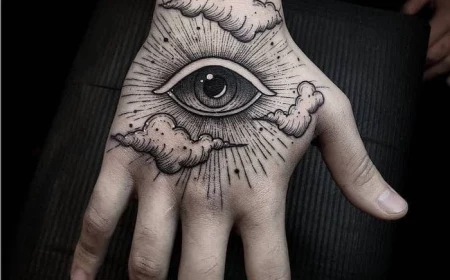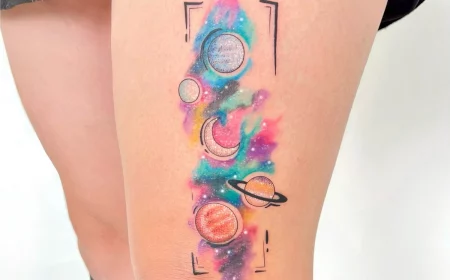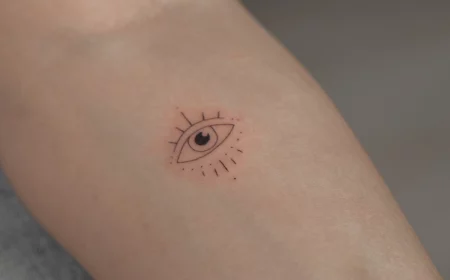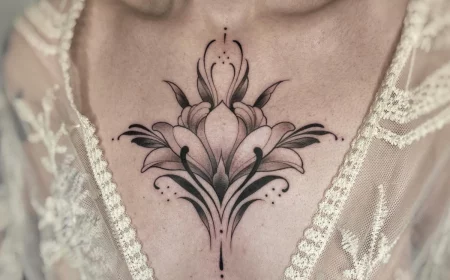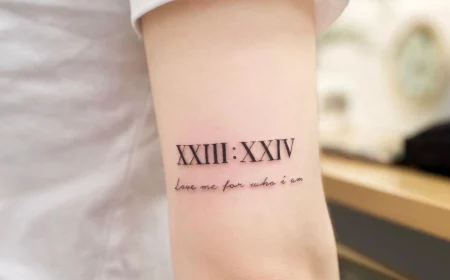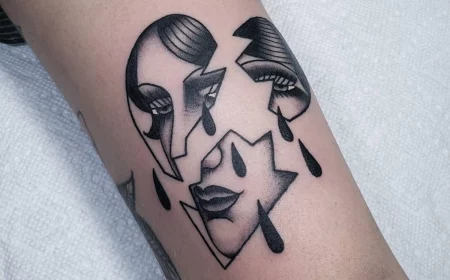Thinking About an Angel Wing Tattoo? Here’s What an Artist Wants You to Know
After years of holding a tattoo machine, you start to see patterns. Trends pop up, get super popular, and then fade away. But some designs are different. They stick around because they mean something deeper. And angel wings? They’re definitely one of them.
In this article
They’re more than just a pretty picture; they’re a powerful, personal statement. I’ve inked them on massive backs, wrapped them around forearms, and placed them delicately on ankles. I’ve done them in stark, bold black and in soft, dreamy watercolor. But every single time, it’s a journey I take with the client, built on trust and a shared idea.
So, this isn’t just a gallery of cool photos. My goal is to talk to you like you’re right here in my studio, planning your piece. We’ll get into what these wings can represent, but we’ll also cover the real-deal stuff—the technical craft, the cost, the pain, and how to protect your investment. Getting a big tattoo is a major decision, so let’s make sure you go into it with your eyes wide open.
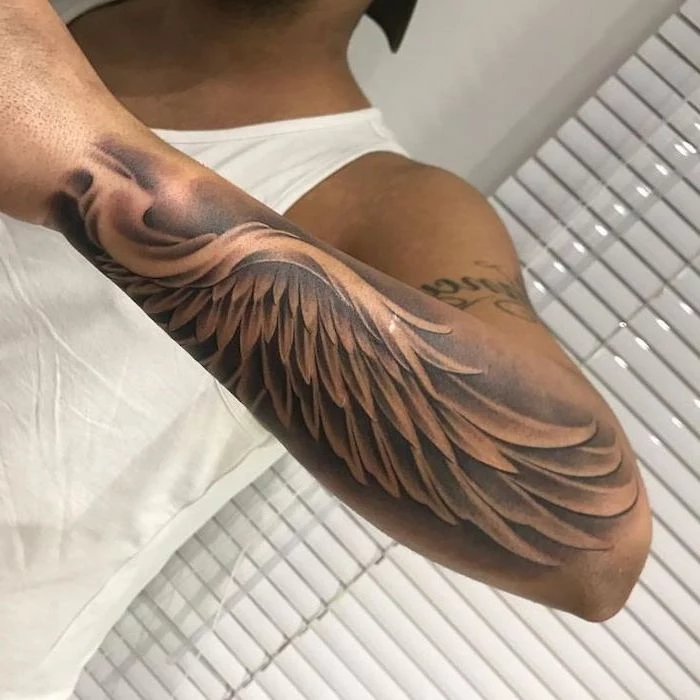
The “Why” Behind the Wings: Finding Your Story
The first question I always ask is, “What do these wings mean to you?” While the image is universal, the reason is always incredibly personal. Nailing down your own “why” is the most important step, because it shapes every single decision that follows, from the style of the feathers to where it sits on your body.
Memorial and Guardianship
Honestly, this is the most common reason people walk through my door for wings. It’s a way to honor a loved one who has passed on. The wings become a symbol that this person is at peace, watching over them like a guardian angel. These sessions are often quiet and full of emotion. Sometimes we’ll tuck a name or a meaningful date into the feathers, or maybe add a small, subtle halo over one wing. It transforms a tattoo from just ink into a living story.
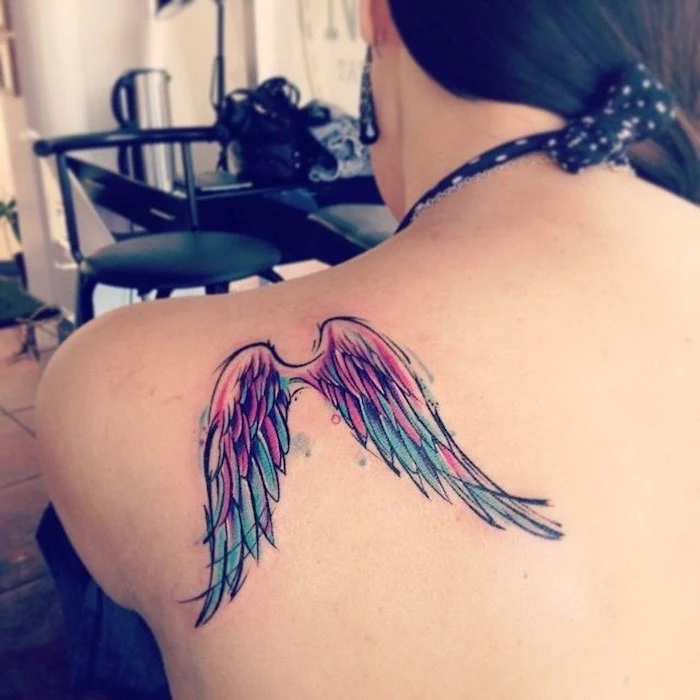
Personal Strength and Freedom
Wings can also be a massive symbol of overcoming hardship. I’ve worked with so many people who have fought through illness, addiction, or just a really tough time in their lives. For them, getting wings is like a declaration of freedom and resilience. It’s a way of saying, “I went through hell, and I rose above it.”
By the way, a really powerful take on this is the single or “broken” wing design. It acknowledges a past struggle or a part of you that feels scarred, but it also shows an incredible will to keep going. It says, “I’m not perfect, I’ve been damaged, but I’m still flying.”
Spirituality and a Higher Path
Of course, there’s the direct link to faith and spirituality. But it’s not always about organized religion. For many, it represents a connection to their own higher self or a promise to live a more mindful, purposeful life. The design can reflect this, too. Wings pointing up can show aspiration, while folded wings might suggest a sense of inner peace and contemplation.
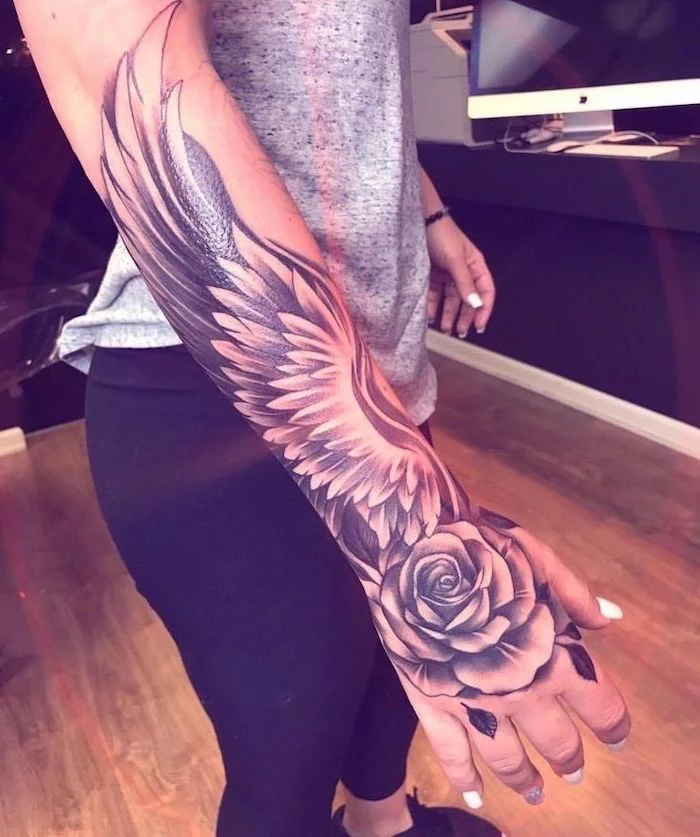
The Balance of Light and Dark
One of my absolute favorite designs to work on is the half-angel, half-demon wing. It’s a visually stunning way to represent the complexity of being human. It’s an honest look at the balance between our good intentions and our darker impulses. To be frank, it’s a tattoo that says, “I contain multitudes.”
From an artist’s point of view, these are a dream. You get to play with incredible contrast. The angel wing can be all soft grays and delicate lines, looking airy and light. Then, the demon wing can be bold, solid black with sharp, leathery textures. Placing them on either side of the spine creates this beautiful, dramatic asymmetry that just looks amazing.
Let’s Talk Design, Placement, and… Money
A great idea is only as good as its execution. How a tattoo is designed and where it’s placed on your body are everything. This is where a pro’s advice is worth its weight in gold.
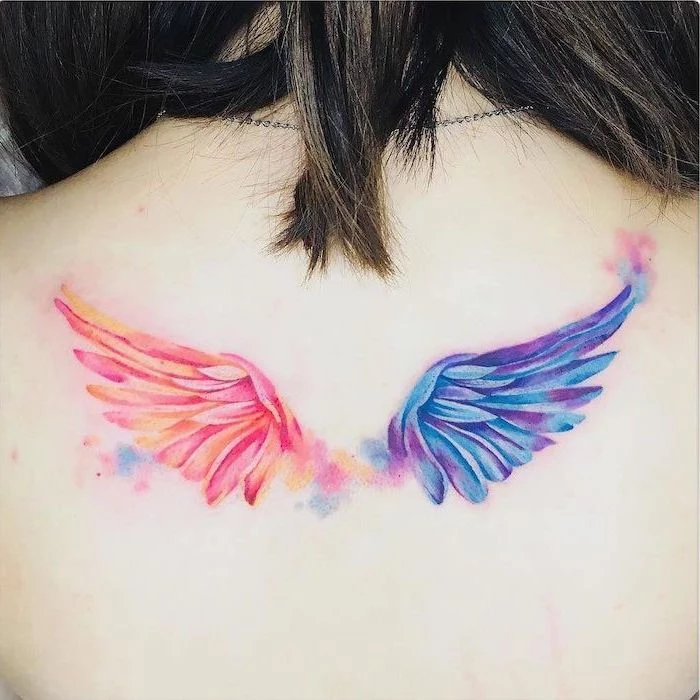
The Full Back: The Ultimate Canvas
The back is the classic spot for angel wings for a reason—it’s a huge, smooth canvas that mimics where wings would naturally be. But a full back piece is a serious commitment.
- Time: A detailed, realistic set of wings can easily take 30 to 50 hours. We don’t do this all at once! This is broken up into multiple sessions, usually 3-4 hours each, with a few weeks of healing time in between.
- Cost: Let’s be real about the money. A good tattoo isn’t cheap. Most reputable artists charge an hourly rate, anywhere from $150 to over $300. So, a large back piece isn’t just a time commitment; it’s a financial one, often ranging from $4,500 to $15,000+. Be very skeptical of anyone offering a cheap price for a huge project.
- Pain: The pain level varies. The fleshy parts on your shoulder blades are pretty manageable. But the spine, lower back over the hips, and near the armpits? Yeah, those spots are intense. We work to manage it, but you have to be ready for some serious discomfort.
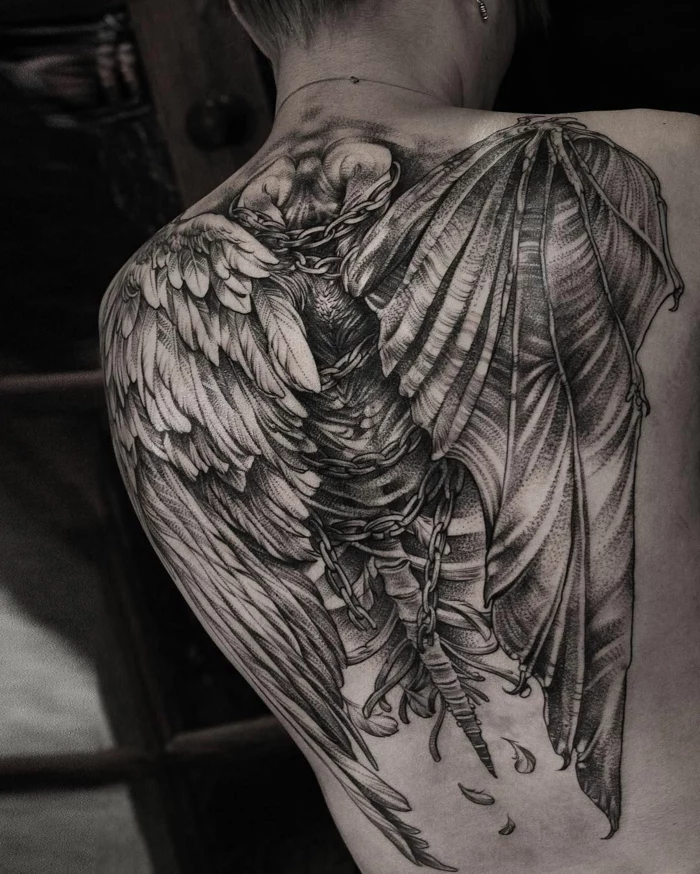
Other Awesome Placements
Not ready to commit your whole back? No problem. Wings look great elsewhere, too.
A smaller set on the upper back or shoulder blades is super popular and a bit more manageable. You’re probably looking at 2-3 sessions and a cost more in the $600 to $1,200 range. For something more subtle, a small pair on the back of the neck can be incredibly elegant. Or, a single wing designed to wrap around a forearm or calf creates a dynamic look that moves with you.
A Quick Note on Skin Tone
This is important! Tattoos look different on different canvases. For darker skin tones, bold designs with strong black lines and deliberate open skin spaces often create the most striking contrast. Black and grey shading can look incredibly smooth and rich. When it comes to color, highly saturated jewel tones—deep reds, blues, and greens—tend to pop beautifully. Lighter colors like baby blue or yellow might not have the same vibrancy. A good artist will know how to adjust their color palette to make the design truly shine on your specific skin tone. Don’t hesitate to ask them for examples of their healed work on skin similar to yours.
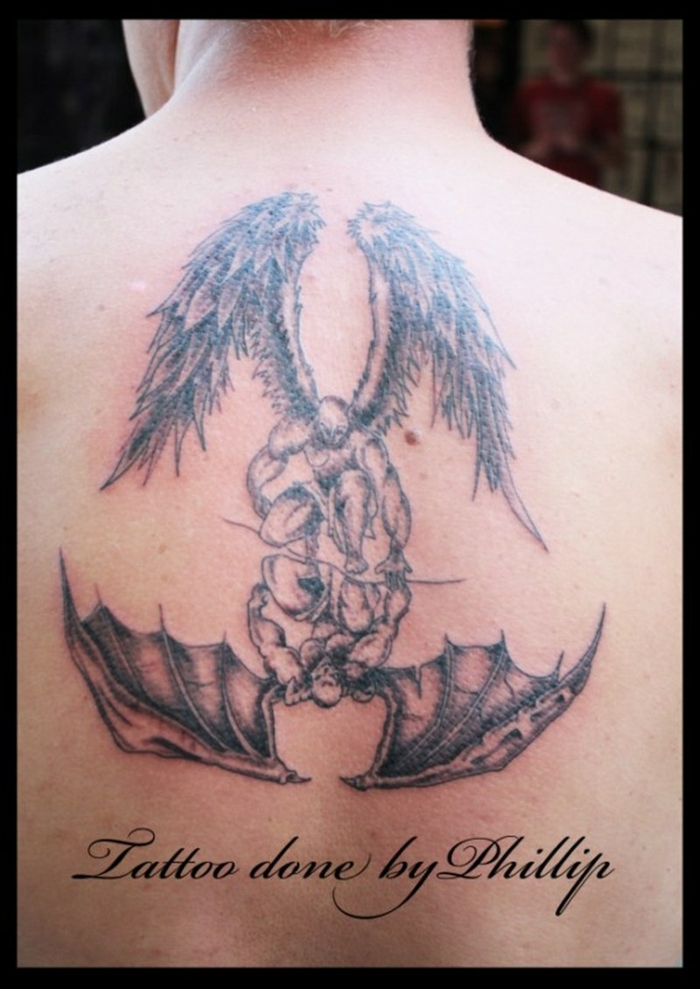
Finding Your Artist (This is Crucial!)
Okay, you’ve got your idea. Now you need the right person to bring it to life. Please don’t just walk into the first shop you see.
Look for an artist whose style you love. If you want realism, find a realism specialist. Scour their online portfolios. And here’s a pro tip: Don’t just look at fresh tattoos. Look for HEALED photos. Instagram is full of glossy, bright photos taken the second the tattoo is finished. Healed work, photographed at least six months later, tells the real story. Are the lines still crisp? Is the shading still smooth, or is it patchy? This is the number one indicator of true skill.
Feeling awkward about sending that first email? It’s common. Here’s a simple template to get you started:
Subject: Tattoo Inquiry – Angel Wings
“Hi [Artist’s Name],
I’m a big fan of your work and I’d love to get an angel wing tattoo from you. I’m thinking of a [style, e.g., realistic black and grey, watercolor] design on my [body part, e.g., full back, right forearm].
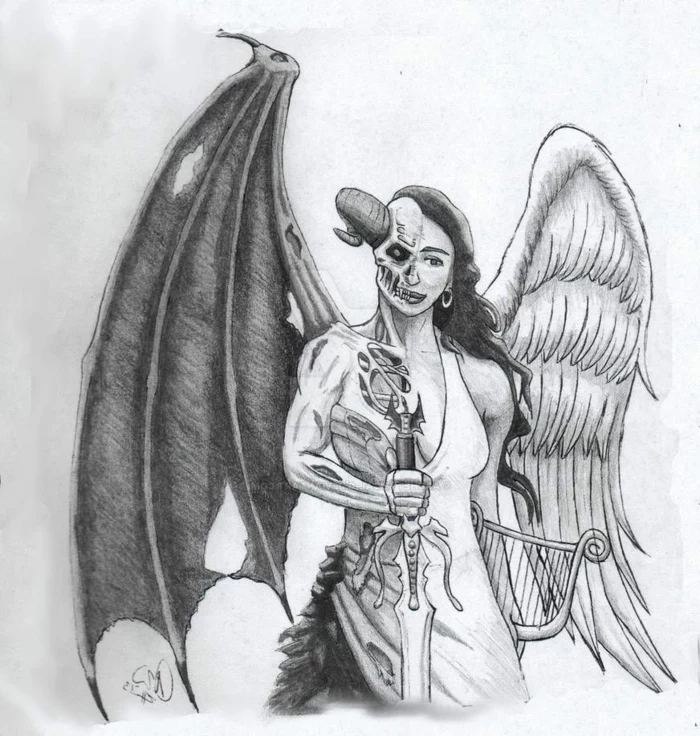
For me, this piece represents [your personal story, e.g., a memorial for my grandmother, my journey of overcoming an illness]. My rough budget is in the range of [$$$]. I’ve attached a few reference photos that I like.
Are you currently taking on new projects like this?
Thanks so much,
[Your Name]”
The Nitty-Gritty: Pain, Prep, and Numbing Cream
Before your session, get a good night’s sleep. Eat a solid meal about an hour beforehand to keep your blood sugar up. And please, don’t drink alcohol for 24 hours before your appointment—it thins your blood and can make the process messier and healing harder.
Now, about numbing cream. Lots of clients ask about it. To be frank, it’s a mixed bag. Some artists are cool with it, others aren’t. It can sometimes make the skin feel a bit rubbery, which is tougher to work with. The biggest issue? It wears off. And when it does, halfway through a long session, the returning sensation can be a huge shock. My best advice is to talk to your artist about it during your consultation. Don’t just show up with it on.
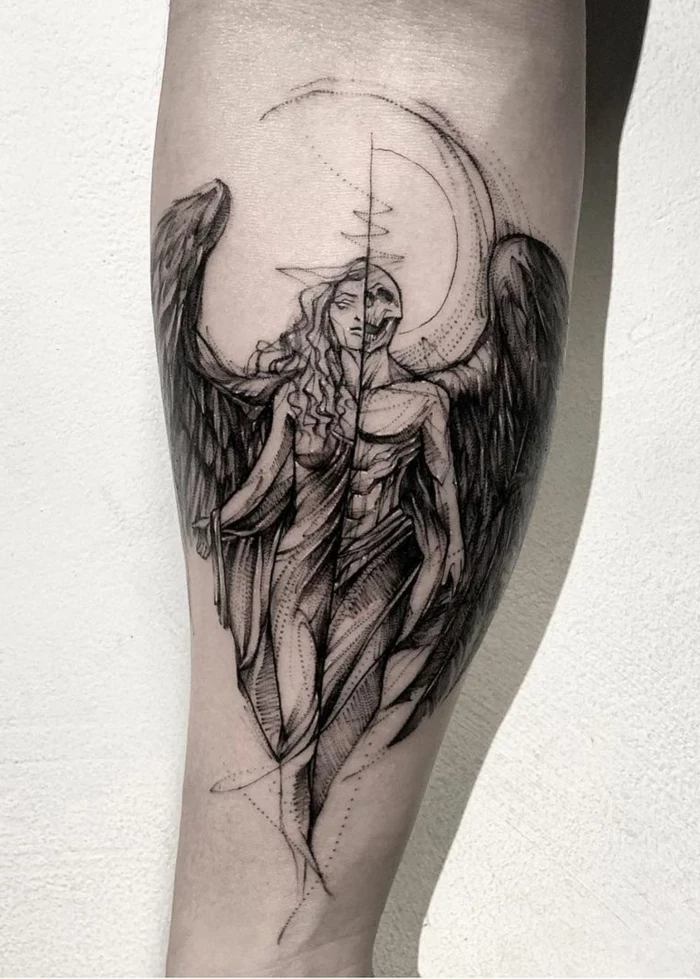
Your Aftercare Game Plan (Don’t Mess This Up!)
Your artist does the tattoo, but you do the healing. Following aftercare is your job, and it’s critical. Your artist will give you specific instructions, but here’s a basic shopping list to get you started.
Your Aftercare Shopping List:
- Unscented Antibacterial Soap: A classic like Dial Gold is perfect. It’ll cost you about $4.
- Healing Ointment: A thin layer is all you need. Aquaphor or a specialized tattoo balm like Hustle Butter works great. Expect to pay around $10-$15.
- Unscented Lotion: After the first few days, you’ll switch to lotion. Something simple like Lubriderm or Cetaphil is ideal (around $8).
For the first couple of weeks, your tattoo will be an open wound. You’ll wash it gently a few times a day, pat it dry with a paper towel (don’t rub!), and apply your ointment or lotion. It will peel and get incredibly itchy. Do. Not. Scratch. It. Seriously. Scratching can pull the ink right out and leave you with a scarred, patchy tattoo.
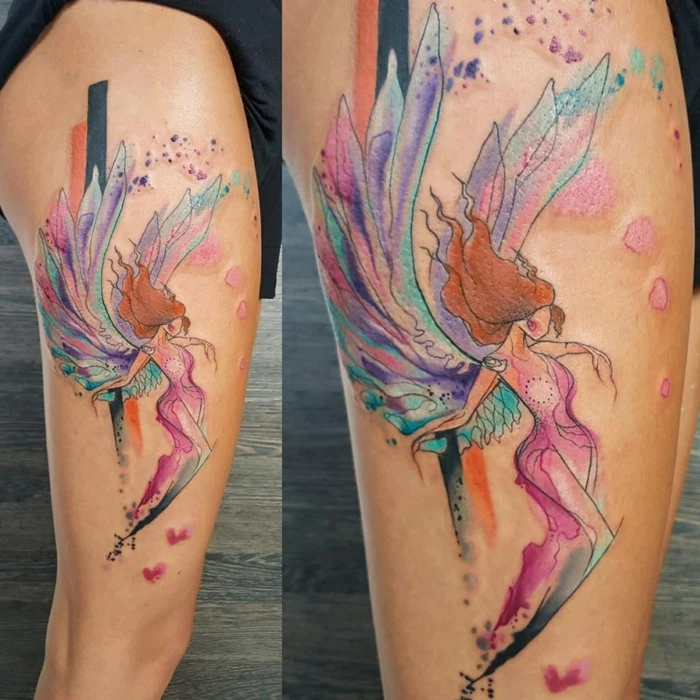
Heads Up! Top 3 Mistakes to Avoid
- Going Too Small with Big Details. You might love a super intricate design on Pinterest, but if you try to shrink it down to a 3-inch tattoo, all those tiny details will blur into a muddy mess over time. Listen to your artist when they suggest sizing up.
- Ignoring an Artist’s Healed Work. I can’t say this enough. A fresh tattoo is not the final product. The healed tattoo is what you live with.
- Slacking on Aftercare. Thinking you can go for a swim in the ocean or a hot tub a week after getting tattooed? You can’t. You’re risking a nasty infection and a ruined tattoo. Take the two-week healing period seriously.
Oh, and one last thing: sunscreen. The sun is the number one enemy of a tattoo. Once it’s healed, treat your tattoo like you treat your face. A high-SPF sunscreen will keep it looking crisp and vibrant for decades. A well-cared-for tattoo might not need a touch-up for 10-15 years, if ever. It’s worth the 30 extra seconds a day.
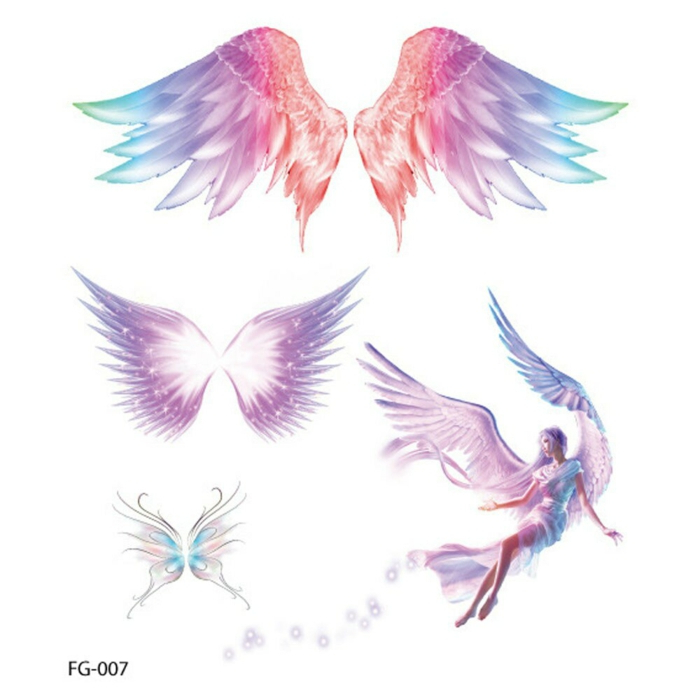
Disclaimer: This is all professional advice from my experience in the industry. But always, always listen to the specific instructions from your own tattoo artist. They know their tools, their inks, and how their work heals best. And if you see any signs of a serious infection (like yellow pus or red streaks spreading from the tattoo), call a doctor right away.
Inspiration Gallery
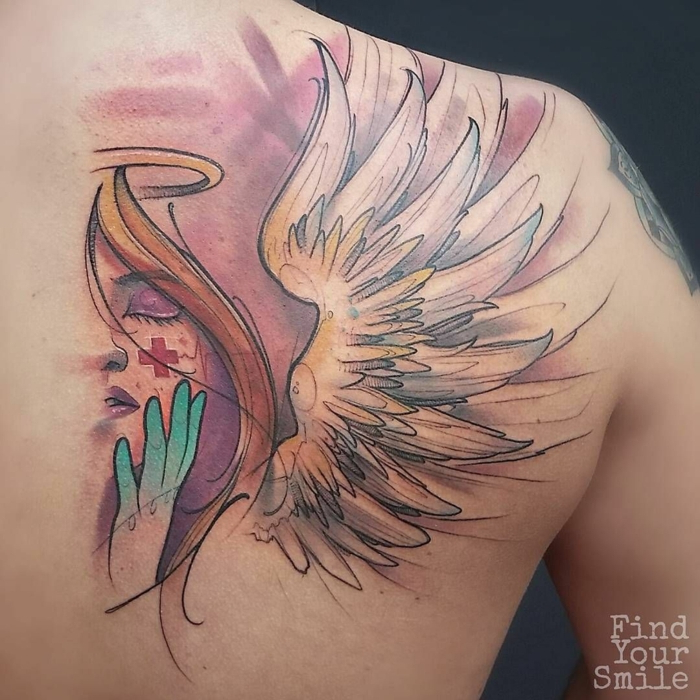
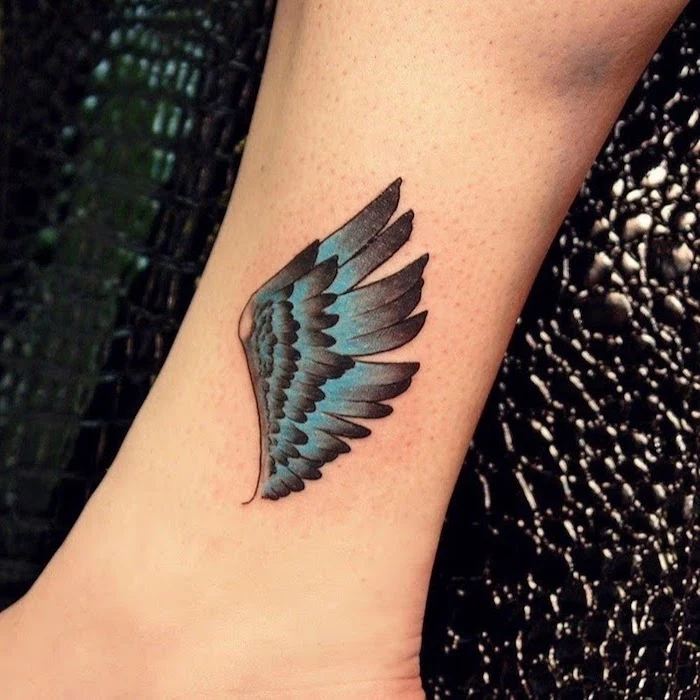
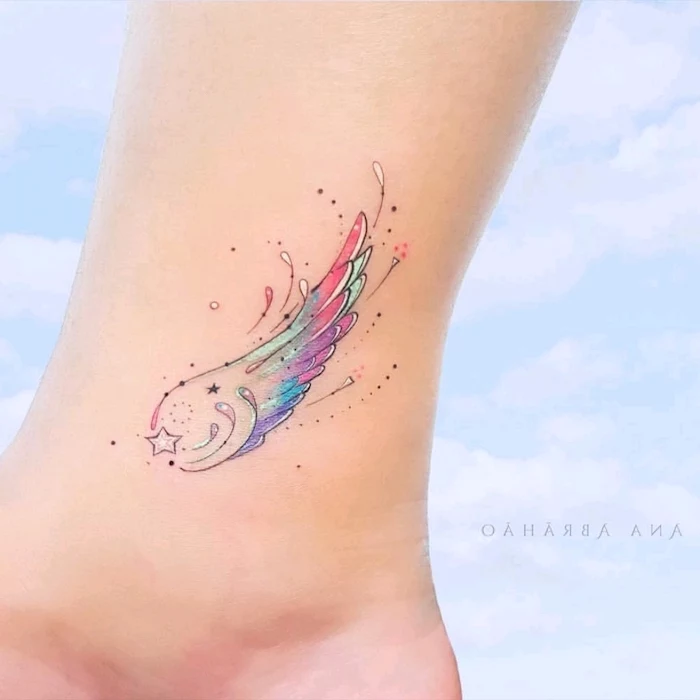
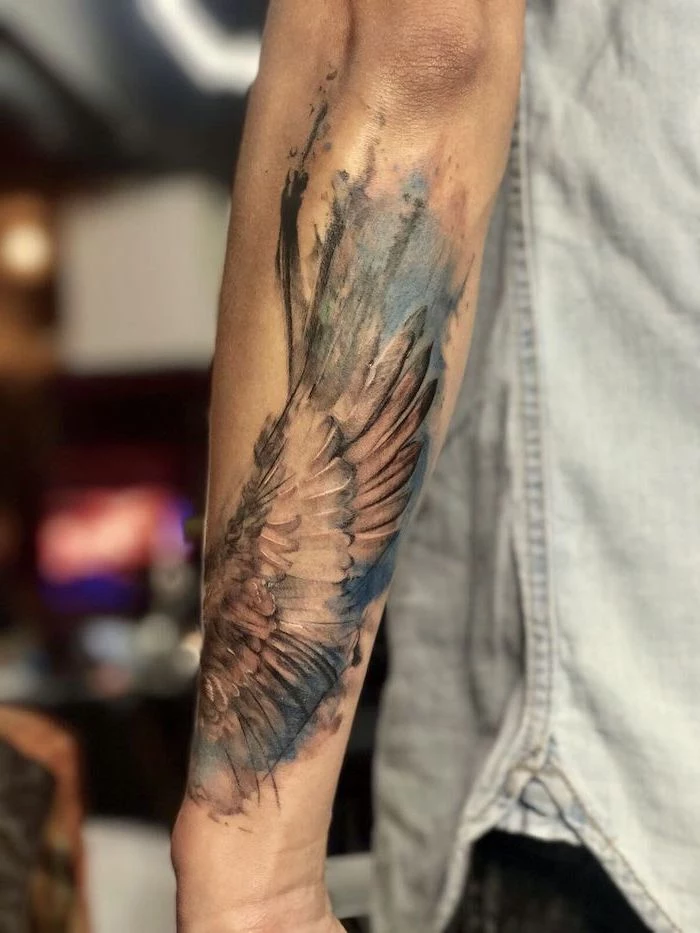
Don’t underestimate the power of a good night’s sleep and a solid meal before your appointment. Tattooing is a marathon for your body, not a sprint. Arriving well-rested and with stable blood sugar will make the experience significantly more comfortable, helping you manage pain and sit still for longer periods.
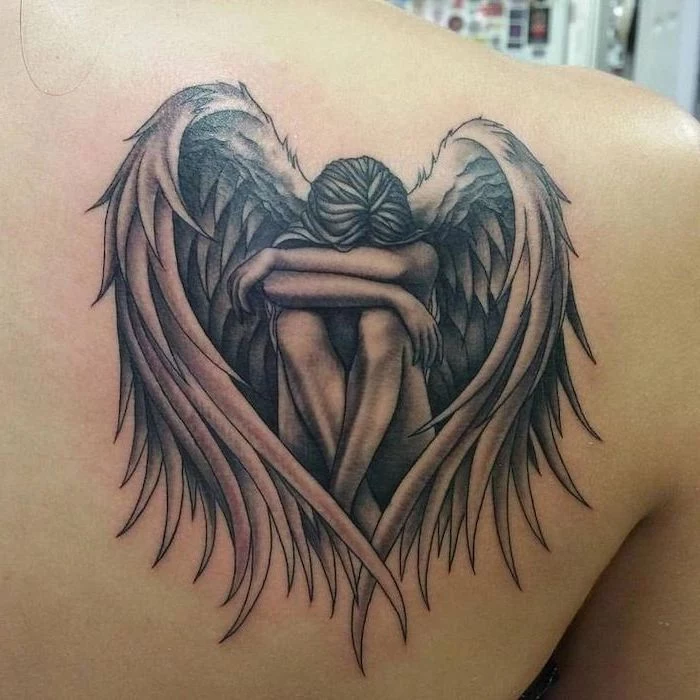
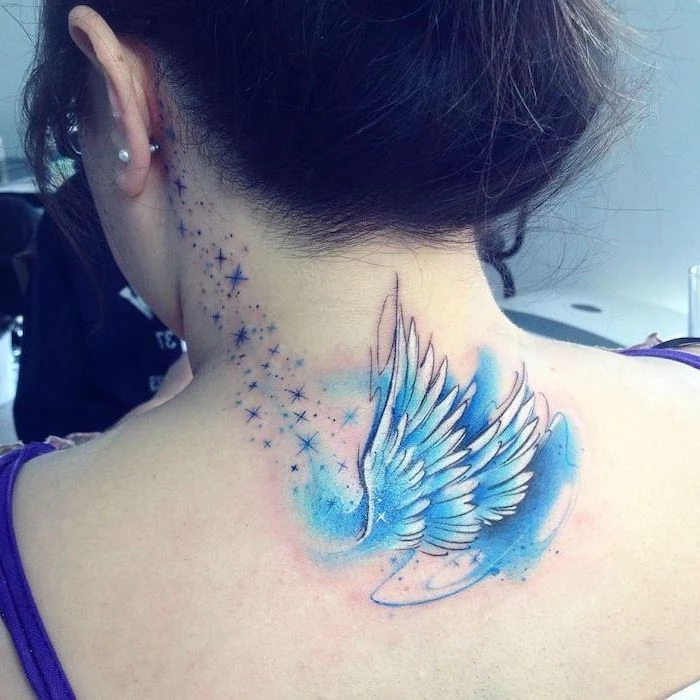
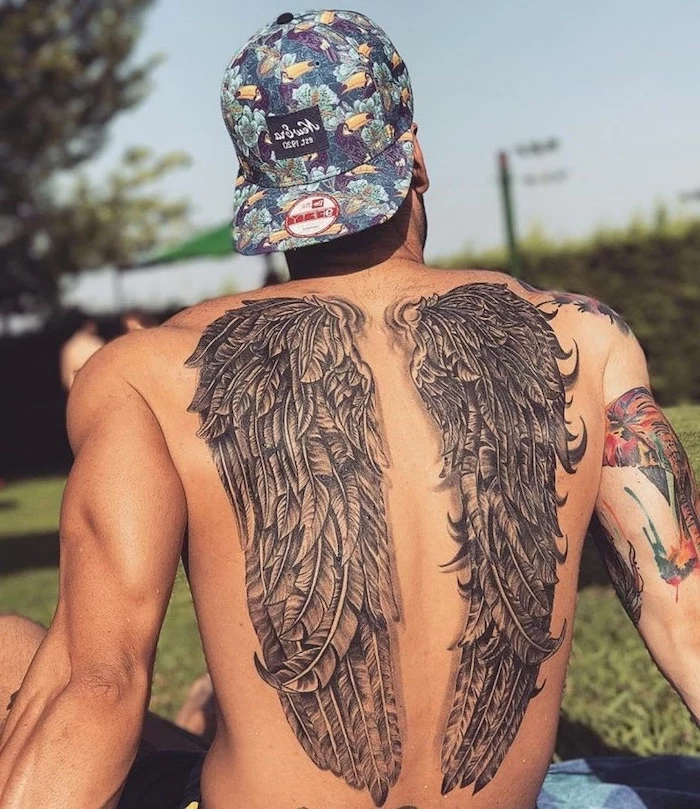
- A high-quality, fragrance-free antibacterial soap (like Dial Gold).
- A dedicated healing ointment. Many artists recommend products like Hustle Butter Deluxe or Aquaphor for the first few days.
- A lightweight, unscented lotion for when the peeling starts (Lubriderm or Cetaphil work well).
- Optional but recommended: a ‘second skin’ bandage like Saniderm or Recovery Derm Shield for the initial healing phase.
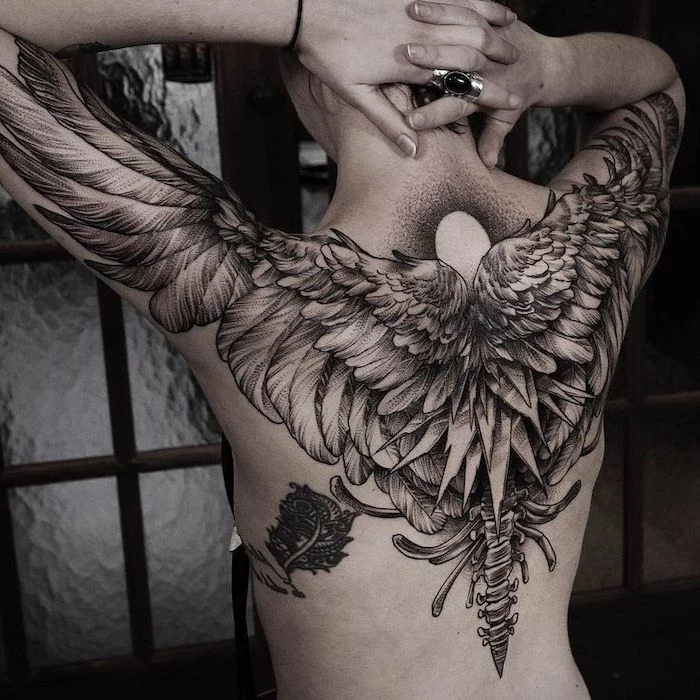
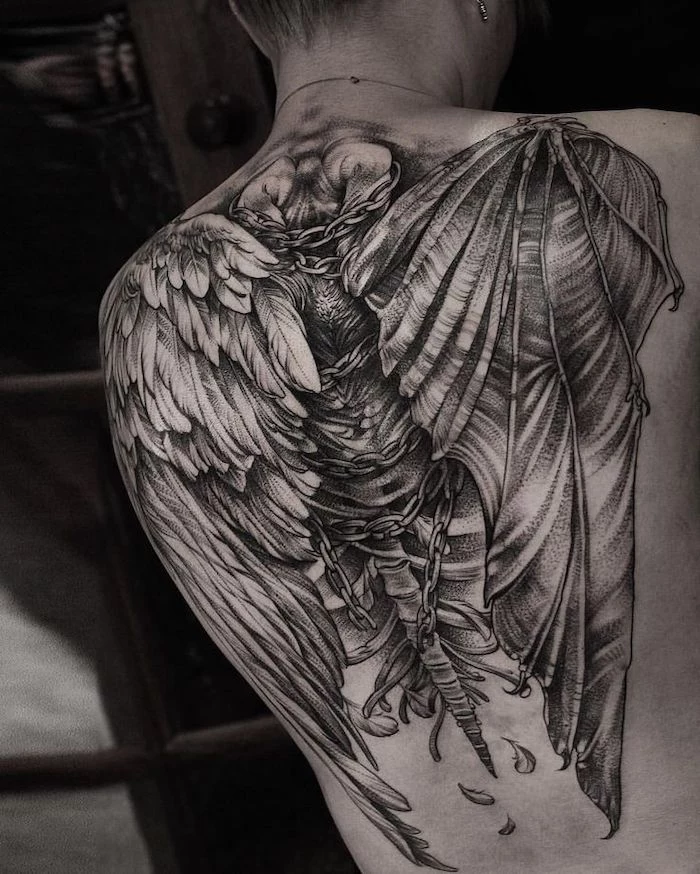
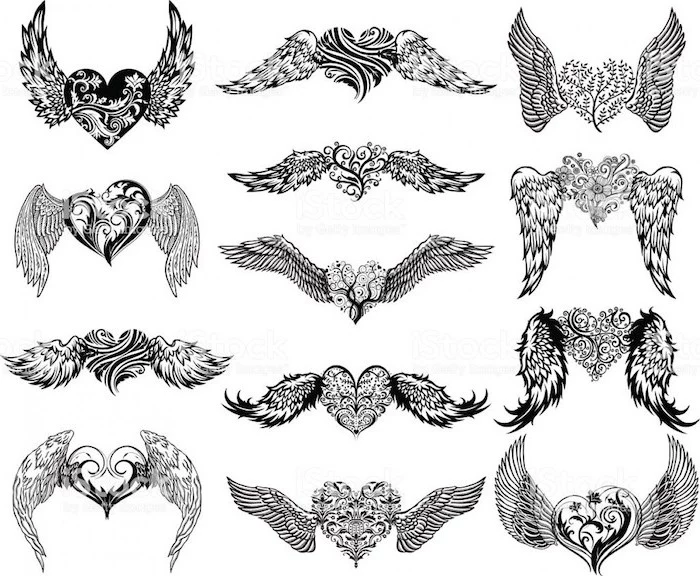
The single biggest mistake: Sacrificing flow for symmetry. Your body isn’t a flat piece of paper. A great artist will design the wings to move with the muscles of your back or the curve of your arm, creating a dynamic piece that looks alive. Perfect, rigid symmetry can often look stiff and unnatural once it’s on the skin.
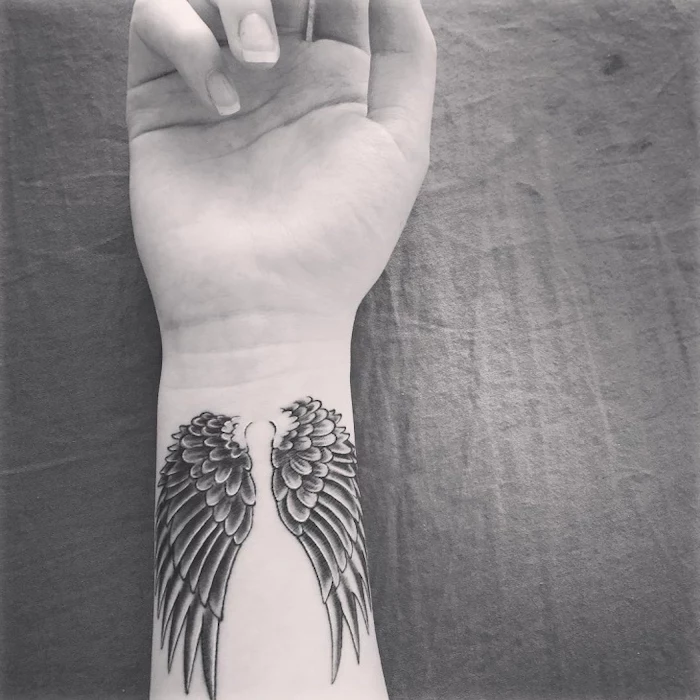
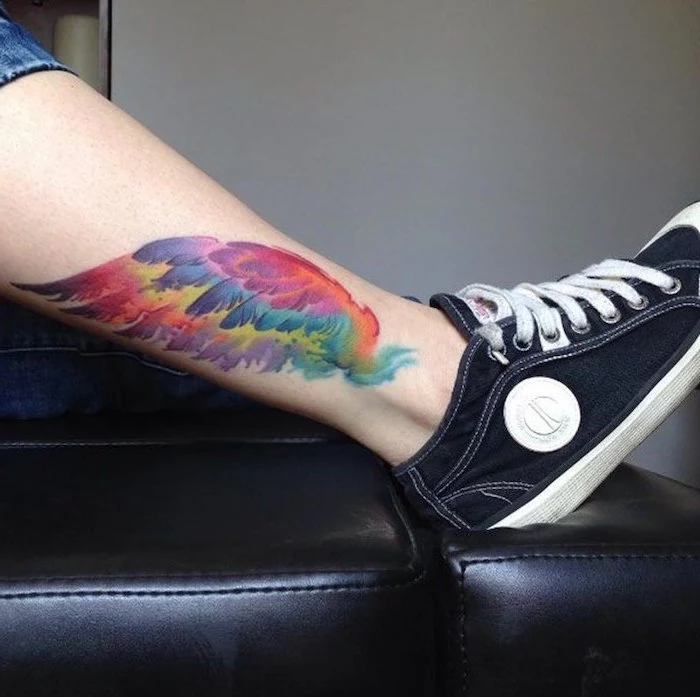
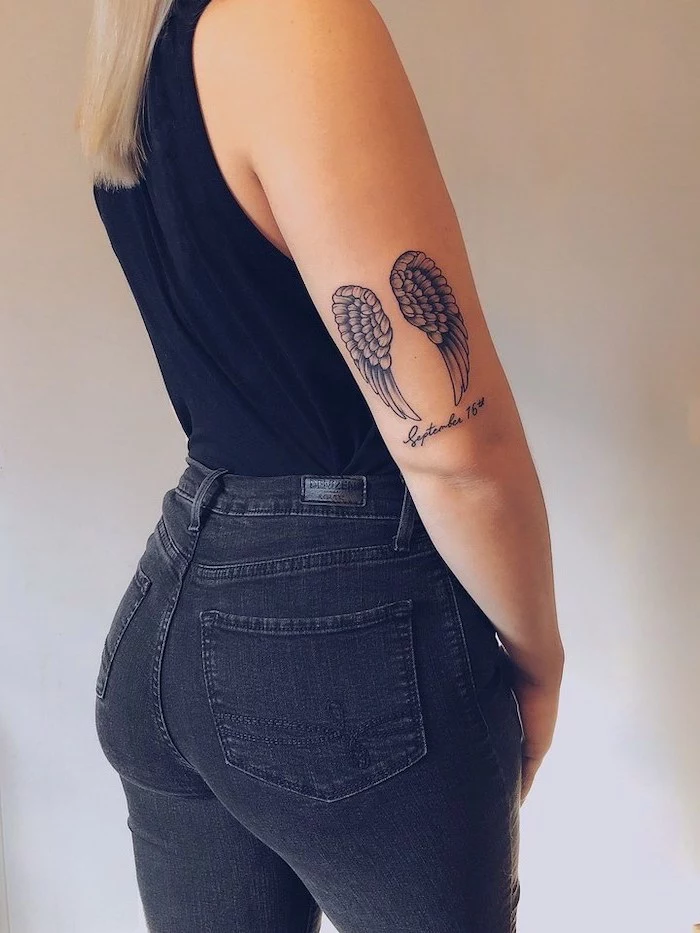
In ancient Egypt, wings were not a symbol of angels but of divine protection and sovereignty, often associated with goddesses like Isis who used her wings to protect and resurrect her husband, Osiris.
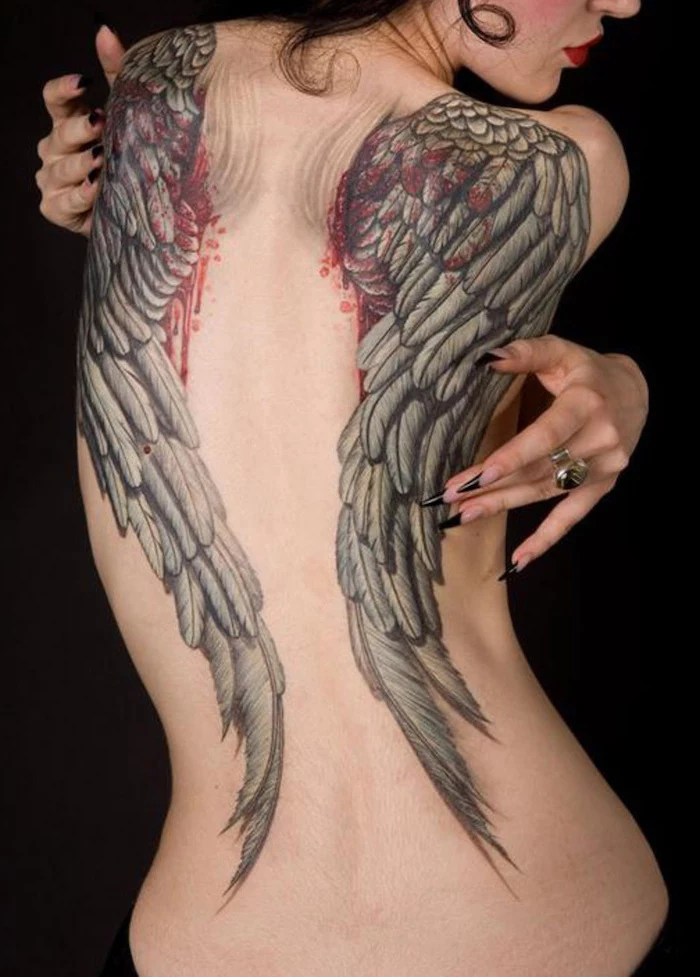
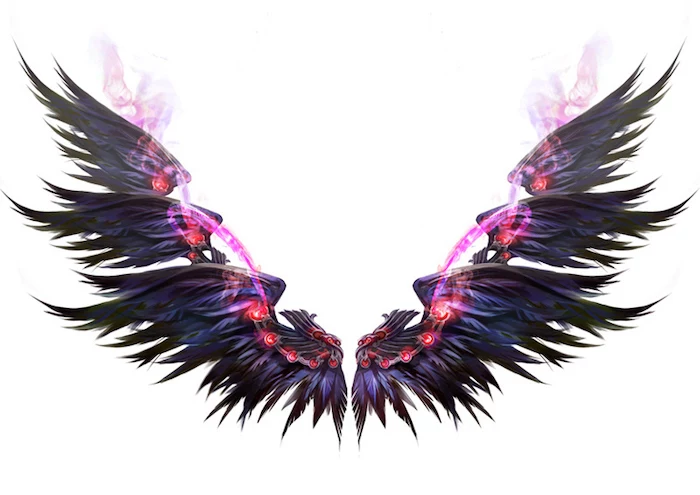
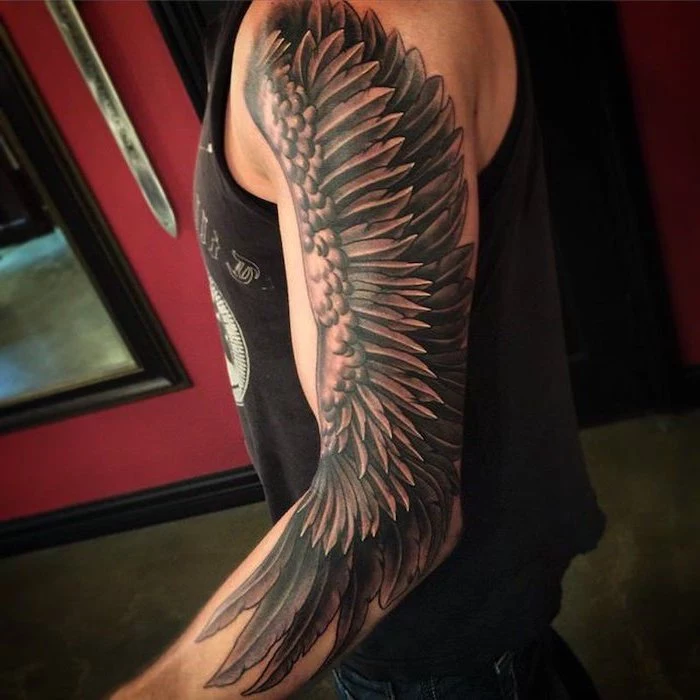
The texture of the feathers defines the mood of your wings. Talk to your artist about the specific effect you’re after. Some popular approaches include:
- Soft & Downy: Achieved with delicate shading and fine lines, perfect for a gentle, memorial piece.
- Sharp & Blade-like: Using strong black lines and high-contrast shading to create a powerful, warrior-like feel.
- Stylized & Graphic: Focusing on bold shapes and patterns within the feathers, leaning into an illustrative or tribal aesthetic.
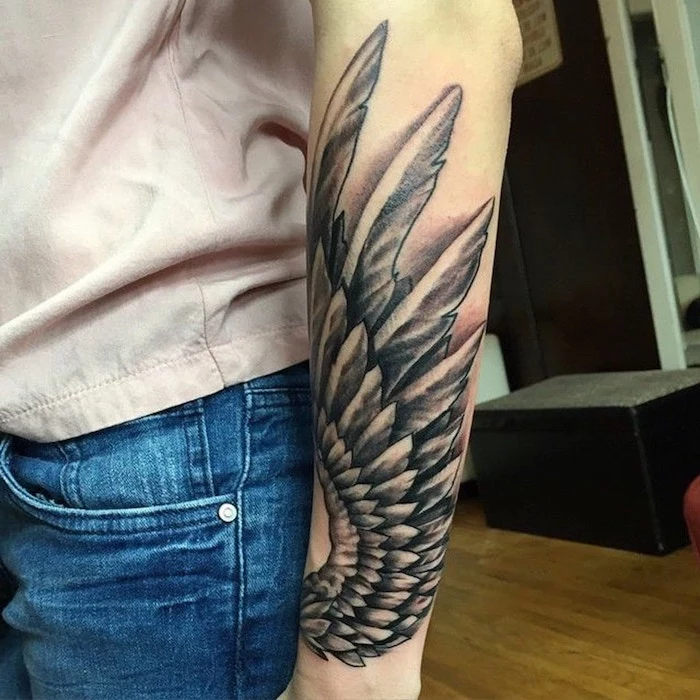
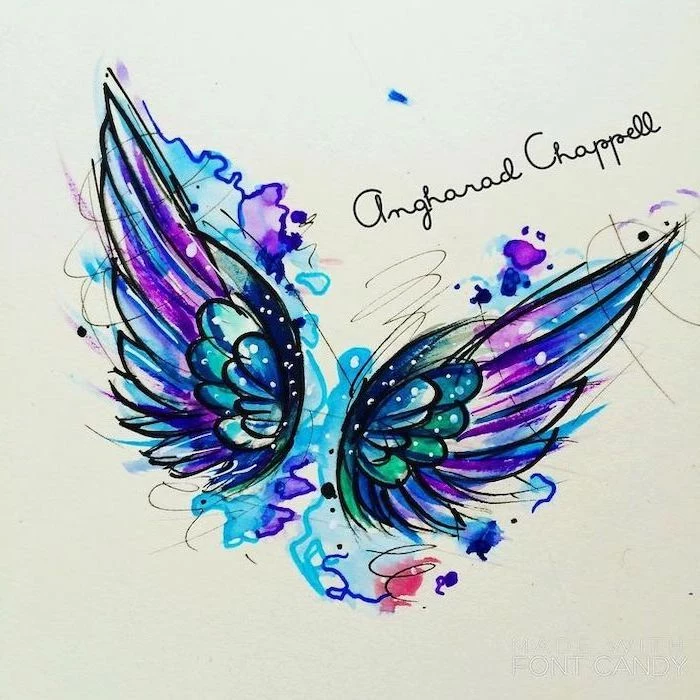
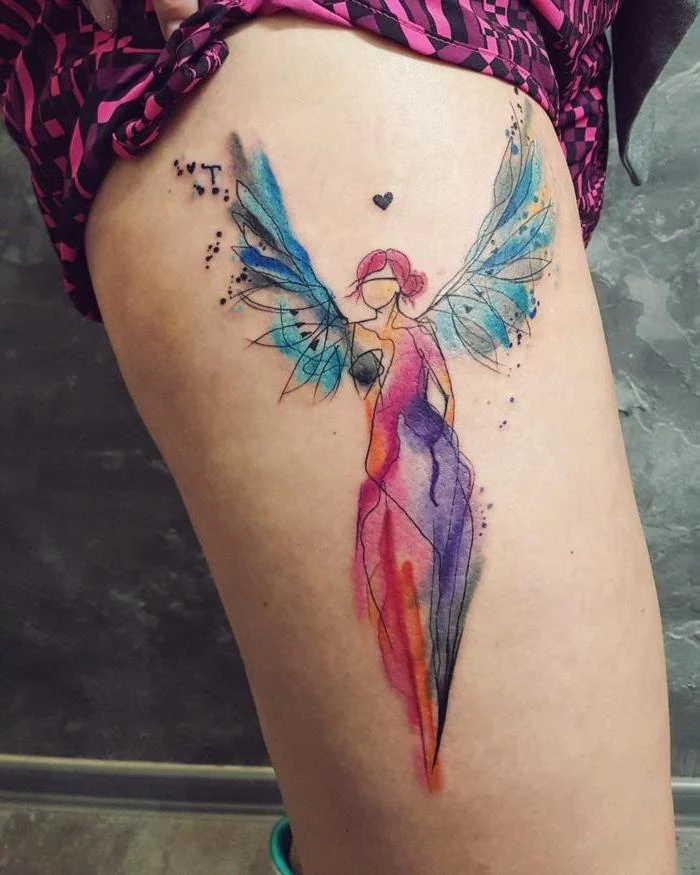
Why do artists often charge more for a single, hyper-realistic wing than for a pair of smaller, simpler ones?
It comes down to time and complexity. A realistic wing requires dozens of hours building up layers of subtle shading, using various needle groupings to create texture, and ensuring every feather looks three-dimensional. A simpler, line-art-based pair might cover more skin but require a fraction of the technical skill and time in the chair. You’re paying for expertise and detail, not just square inches of ink.
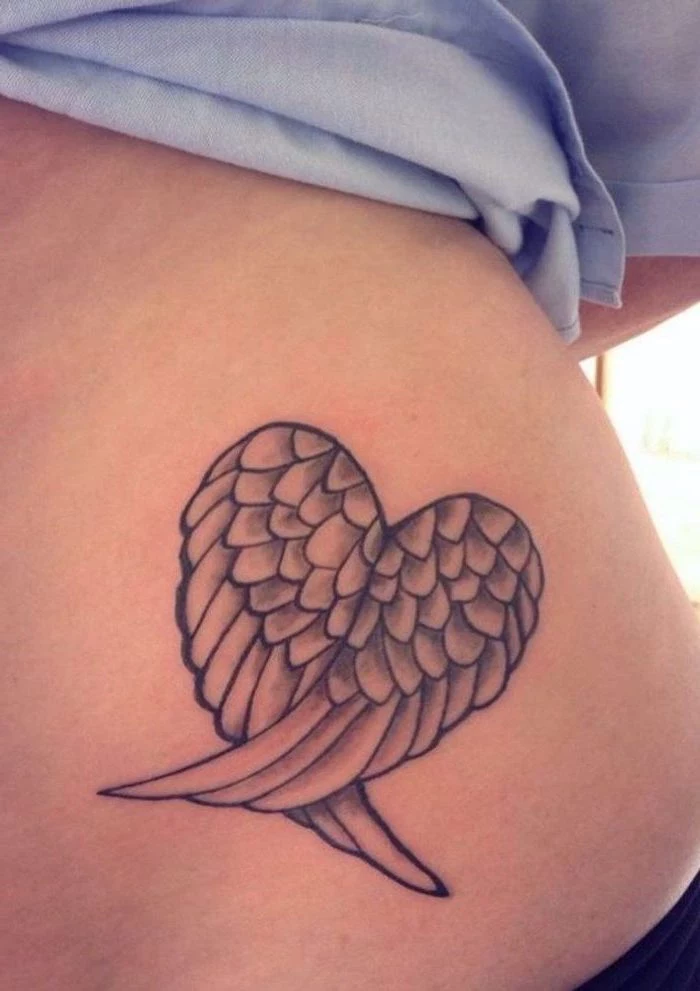
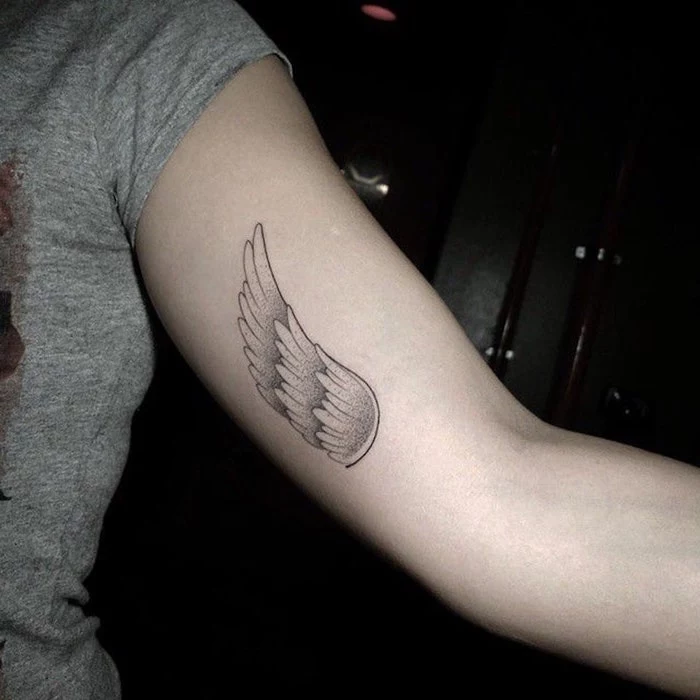
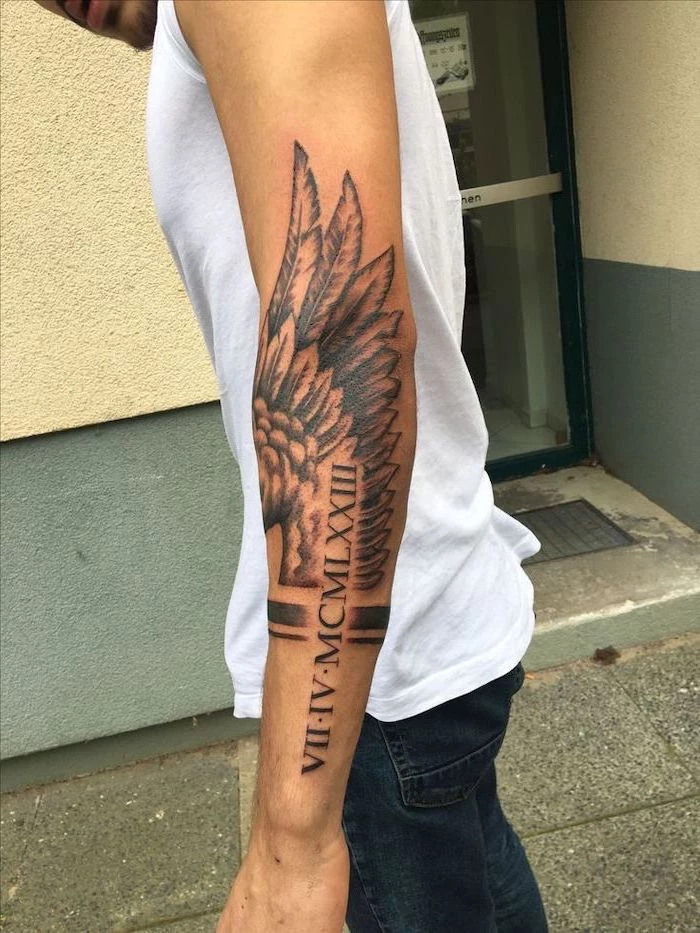
Traditional Wrap: Your artist applies ointment and plastic wrap. You’ll wash and re-apply ointment 2-3 times a day. It’s the old-school method that works, but it can be messy.
Dermal Shield (e.g., Saniderm): A clear, breathable bandage applied once by the artist and left on for 3-5 days. It protects the tattoo from bacteria while letting it breathe, and you just peel it off in the shower when the time is up. It simplifies healing immensely.
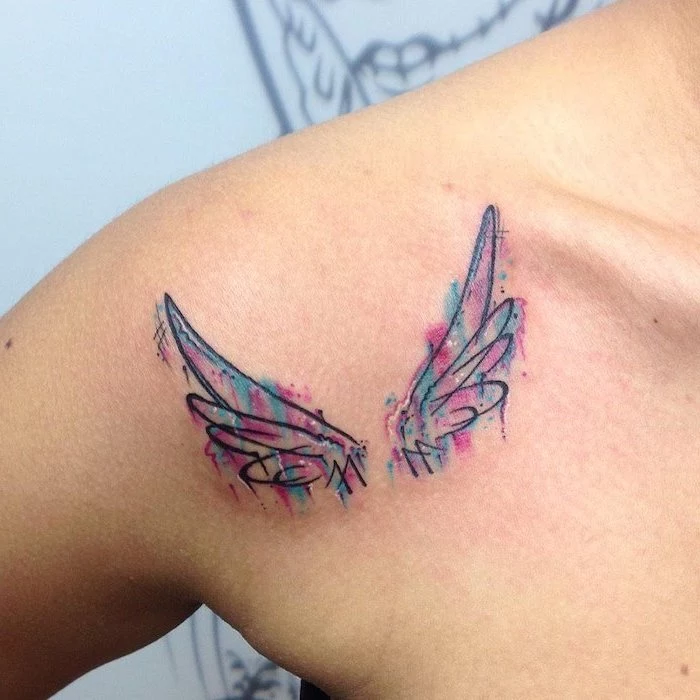
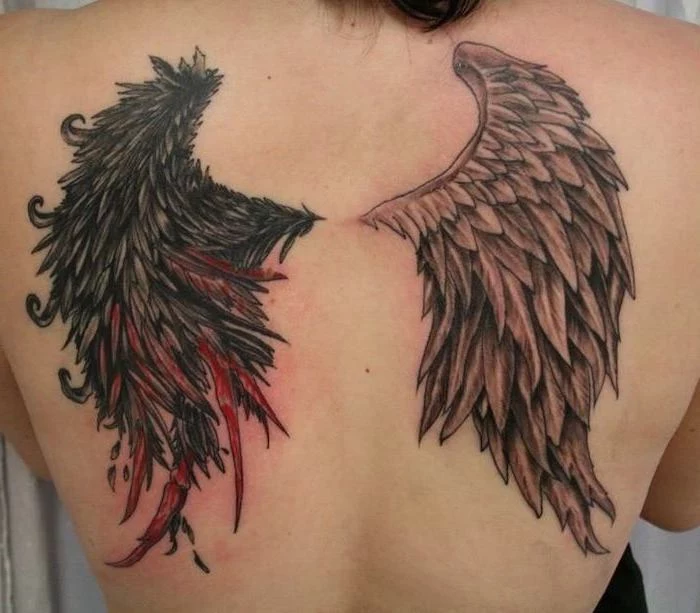
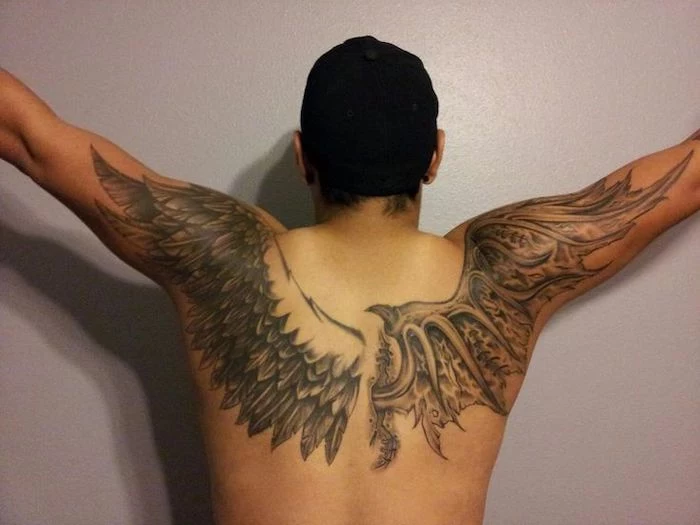
A surprising trend is the use of UV-reactive ink for hidden details. This ink is virtually invisible in normal light but glows brightly under a blacklight.
Imagine wings that appear normal in daylight, but reveal a hidden name, date, or glowing halo when you step into a club or UV-lit space. It adds a layer of magic and secrecy to the design, making the piece’s meaning truly personal to the wearer and those they choose to show it to.
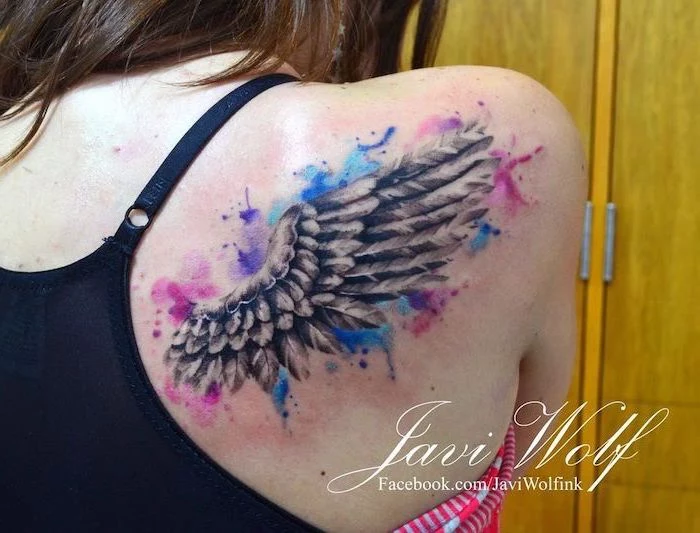
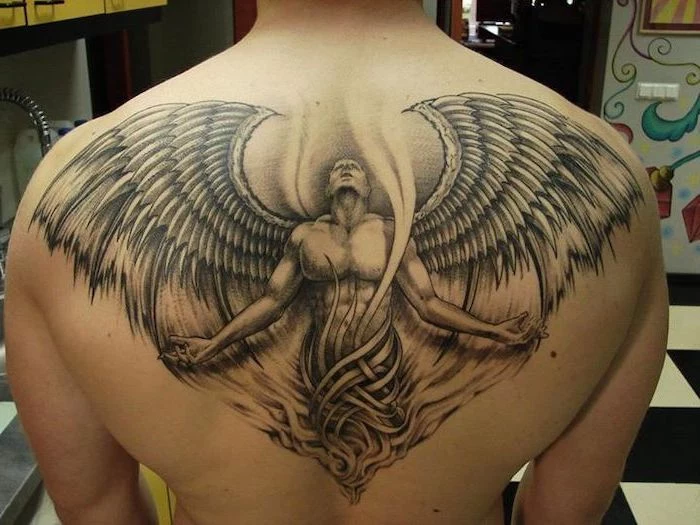
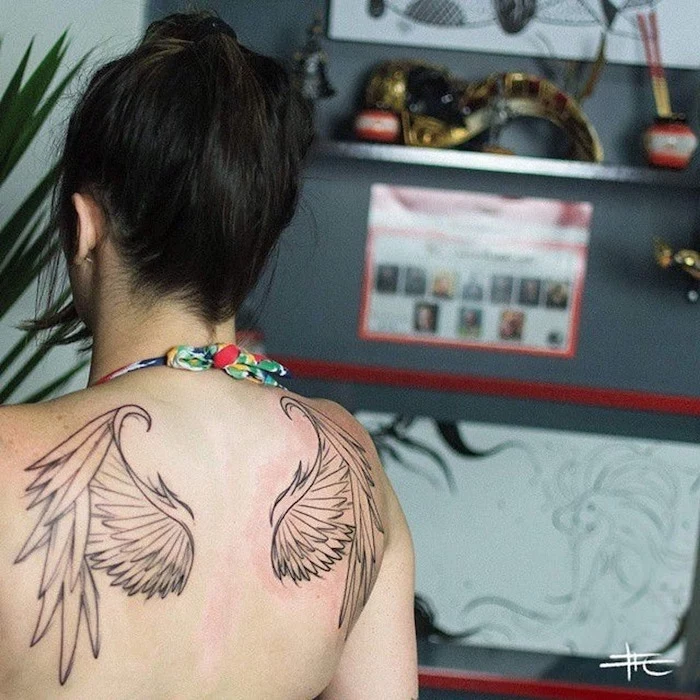
- A rush of euphoria and relief.
- A feeling of heightened senses and accomplishment.
- A temporary reduction in the perceived pain.
The secret? Endorphins. The continuous sensation of the tattoo needle triggers your brain to release these natural painkillers, creating what many call the ‘tattoo high’ right after a long session.
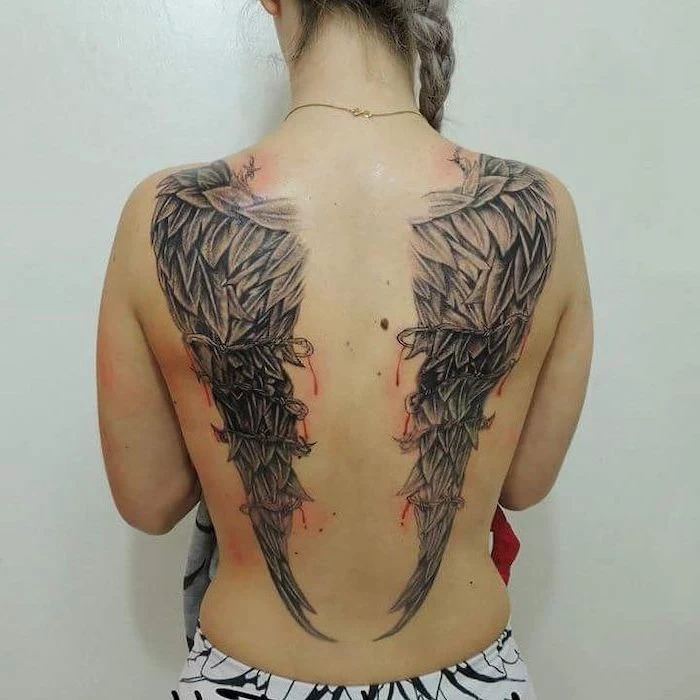
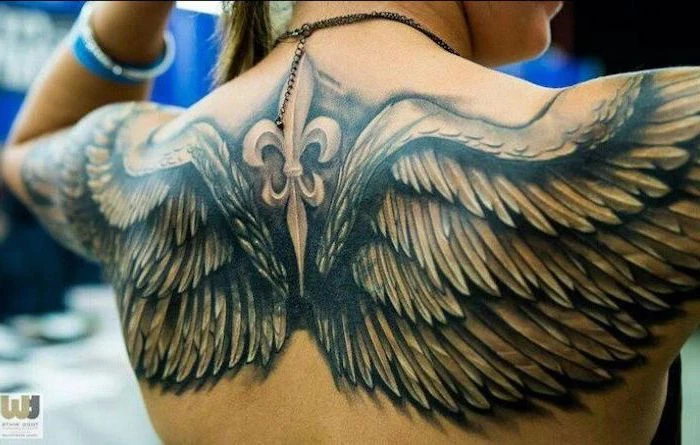
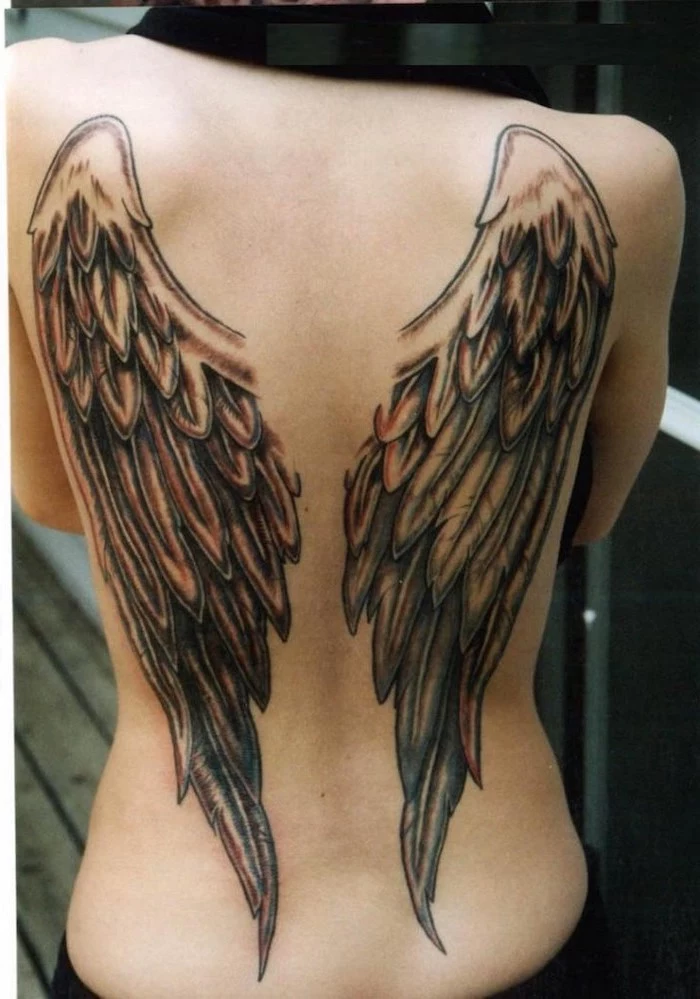
When opting for watercolor wings, the colors you choose can deepen the story. Blues and purples often evoke a sense of calm, spirituality, and peace, ideal for a guardian angel piece. In contrast, fiery reds, oranges, and yellows can symbolize a rebirth, rising from the ashes like a phoenix, or overcoming a passionate struggle.
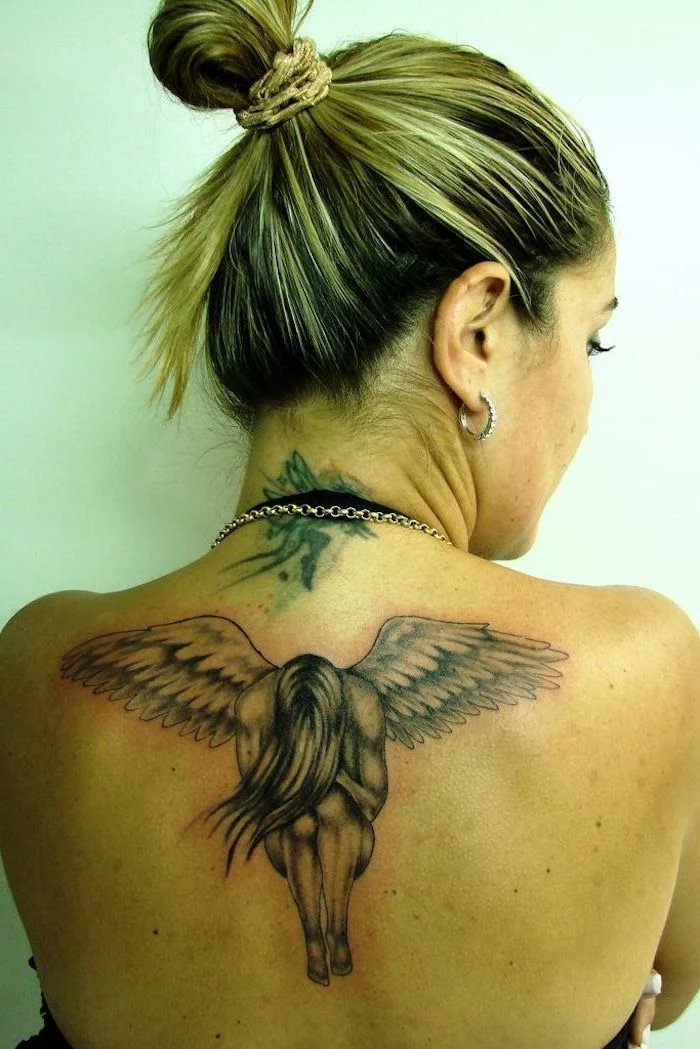
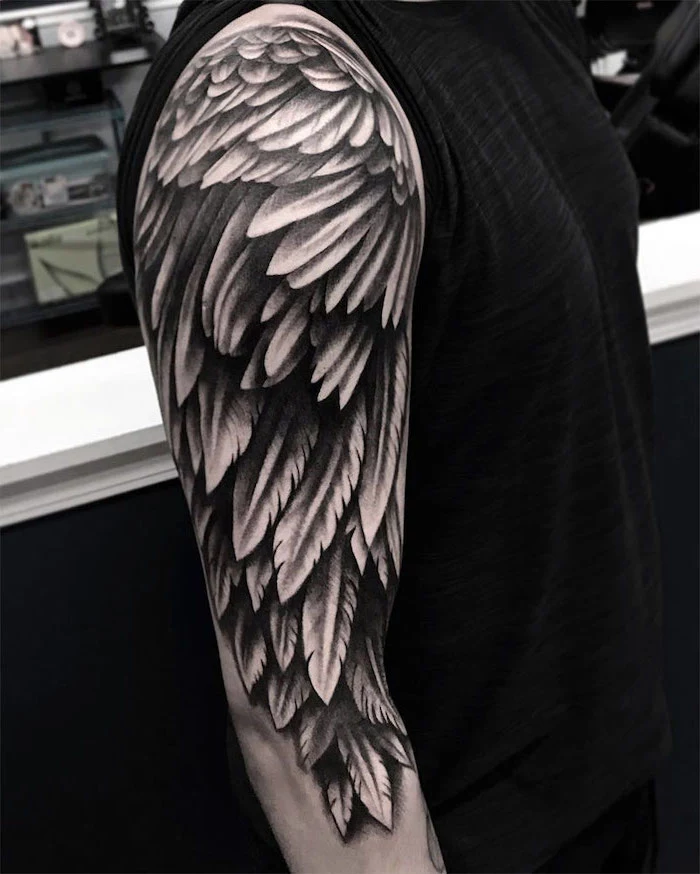
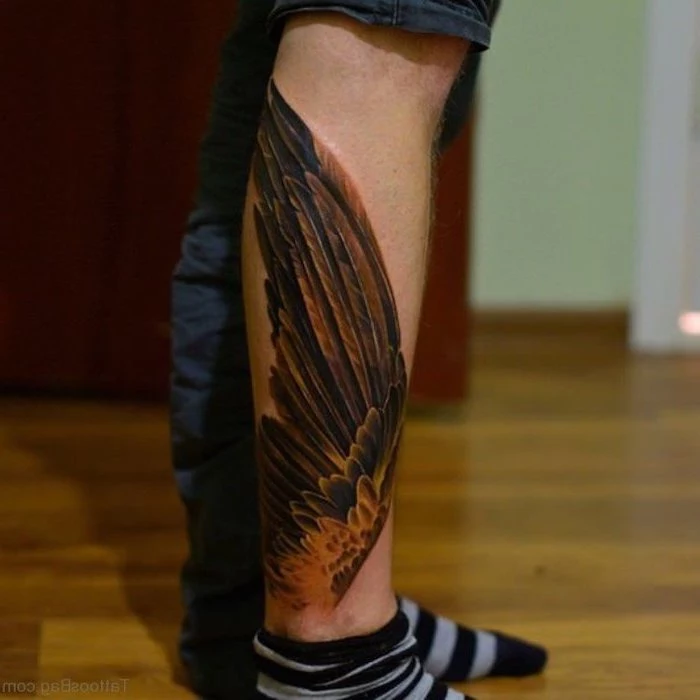
Placement is permanent: A wing tattoo that wraps around your forearm will distort when you twist your arm. A design on the ribs will stretch and move as you breathe. Discuss these dynamics with your artist. They can help you choose a location where the wings will complement your body’s natural movement, not fight against it.
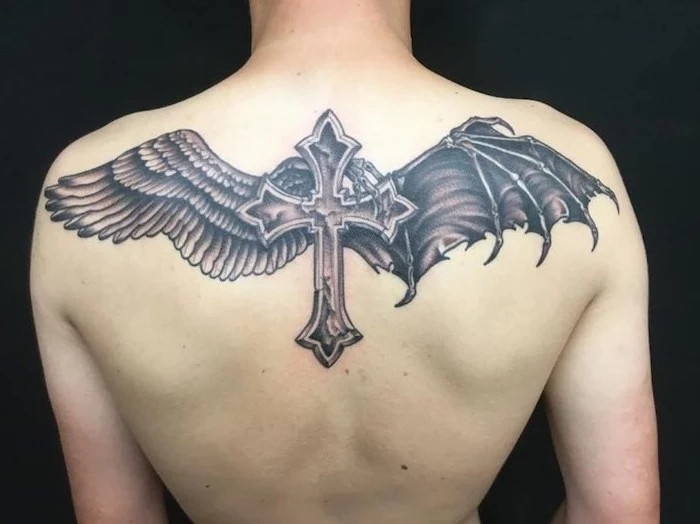
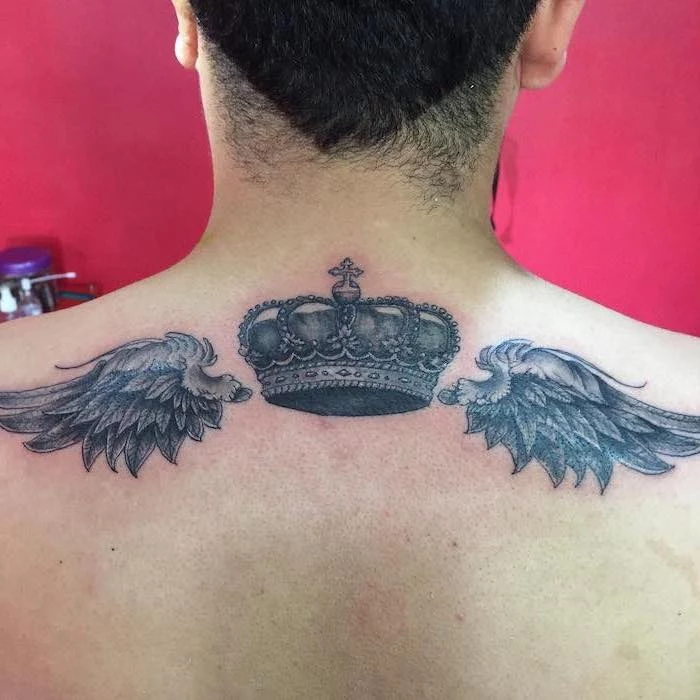
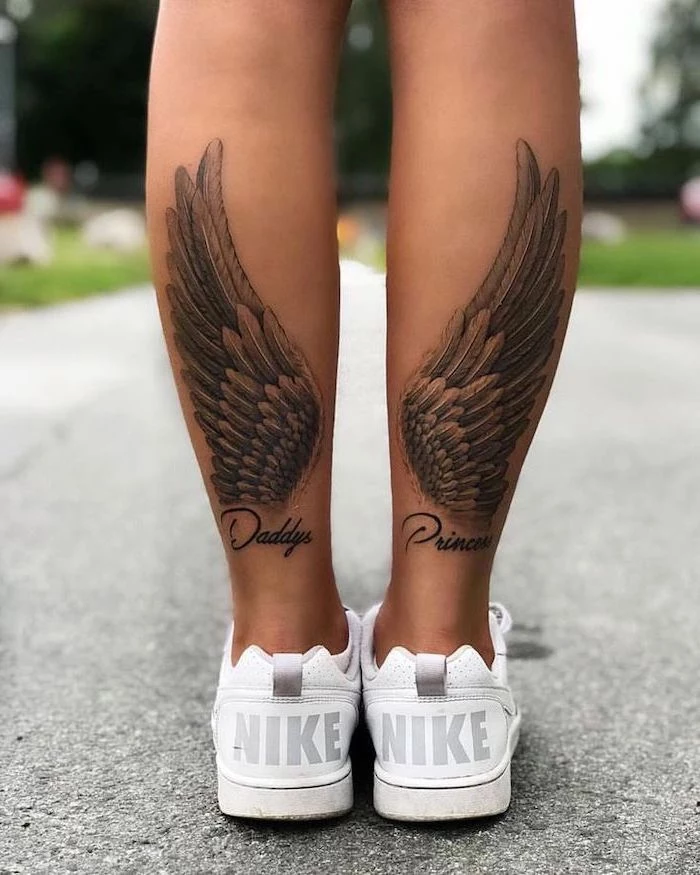
The European Union’s REACH regulations, updated in 2022, banned or restricted over 4,000 chemicals commonly used in tattoo inks, including certain blue and green pigments.
This forced reputable ink manufacturers like World Famous, Eternal Ink, and Intenze to reformulate their color lines. While it caused a temporary panic, it has led to a new generation of safer, highly vetted inks. Always ensure your artist uses compliant, high-quality brands.
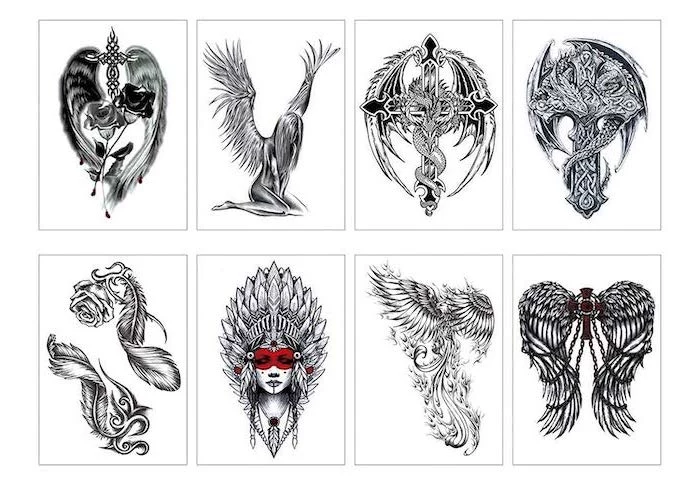
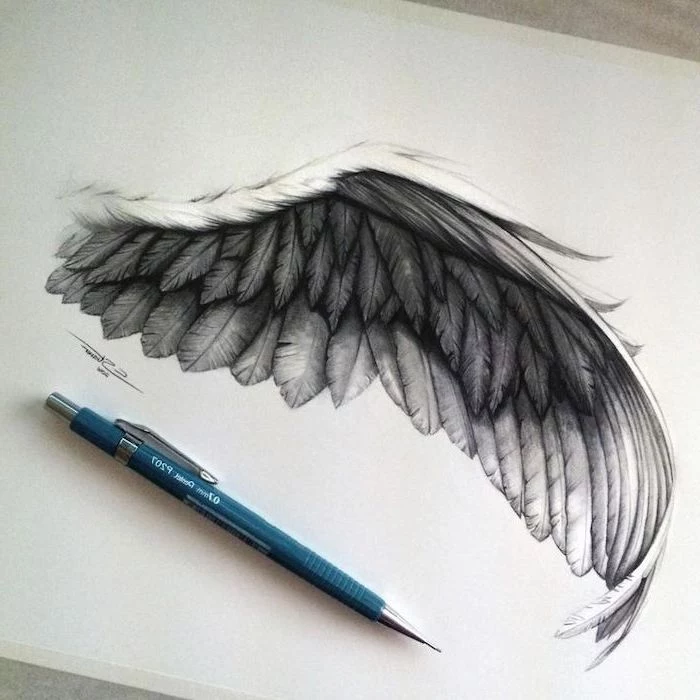
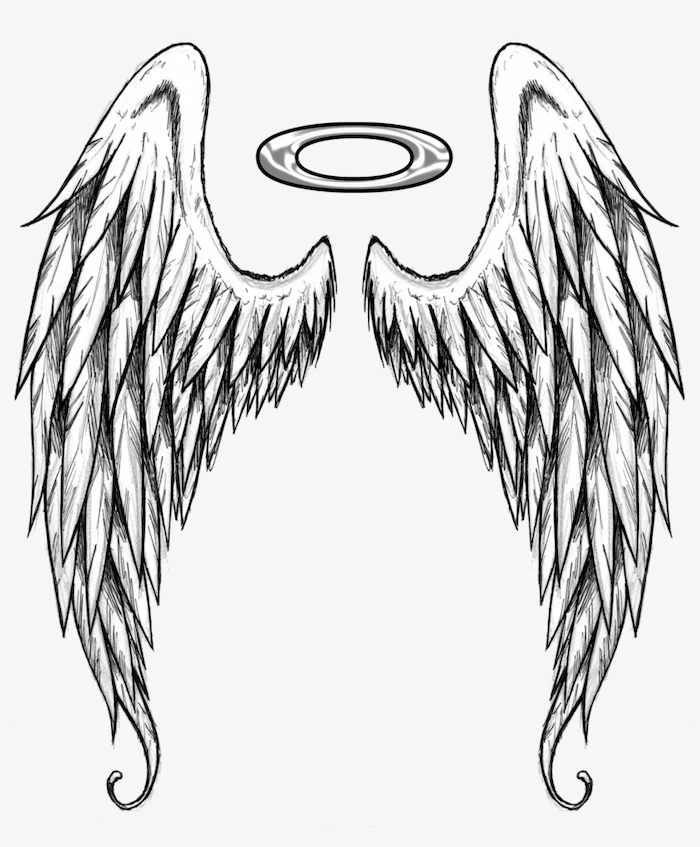
Angel wings serve as a beautiful frame for other meaningful symbols. This creates a design that is uniquely yours. Consider incorporating:
- A Clock or Compass: To represent guidance through a specific time or journey in your life.
- A Key or Lock: Symbolizing a personal secret, a memory locked away, or the key to your freedom.
- Script or Names: Delicately woven into the base of the feathers or flowing between the wings.
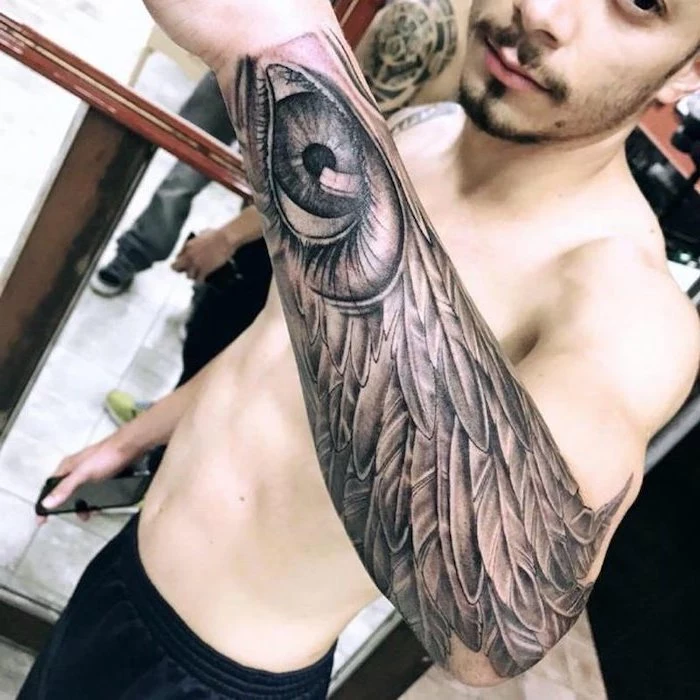
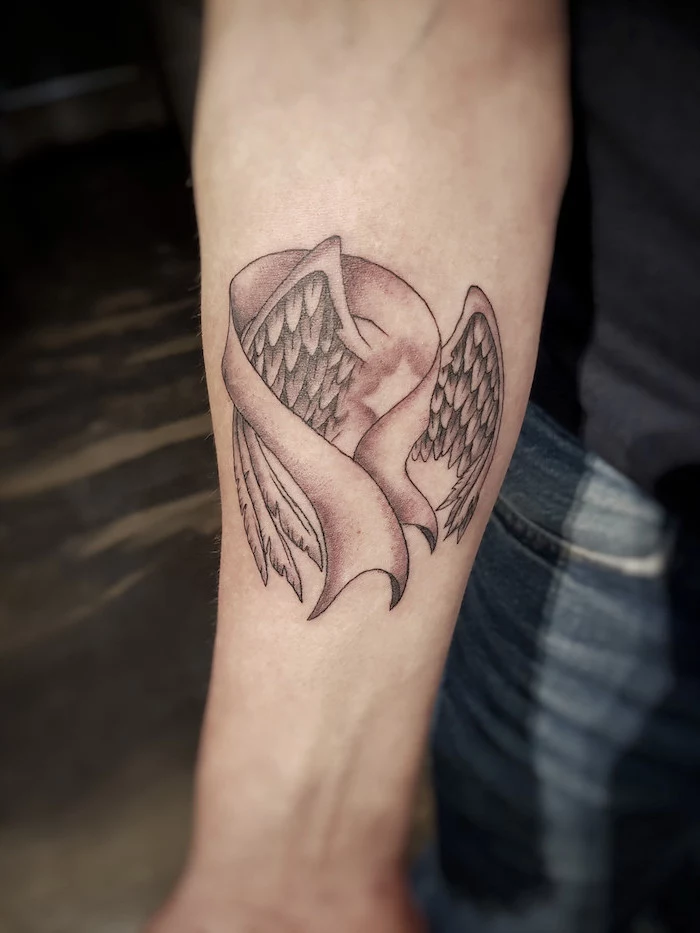

Can you tattoo wings over a scar to cover it up?
Yes, but it requires a skilled artist. Scar tissue is different from normal skin; it can be raised or sunken, and it holds ink differently. An experienced tattooer will know how to work with the texture, often using the flow of the feathers to camouflage the scar’s shape. It’s crucial to wait until the scar is fully healed (usually at least a year old and no longer pink) and to have an in-person consultation first.
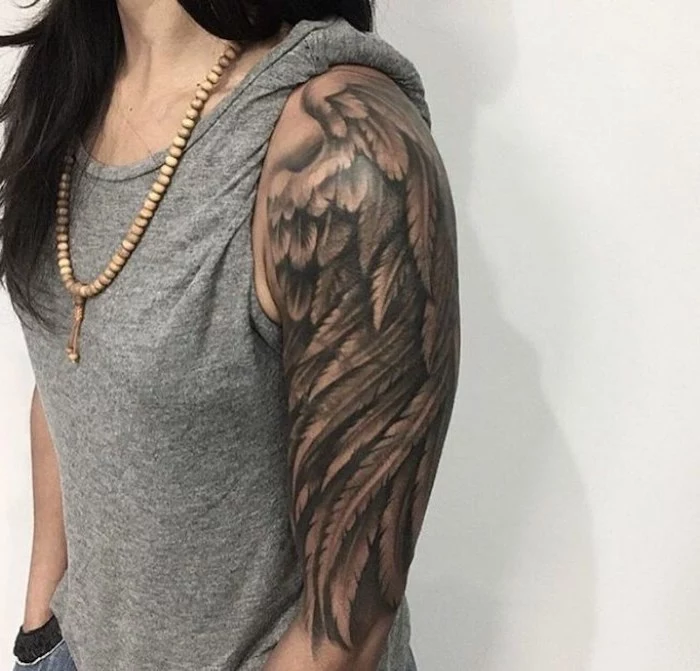
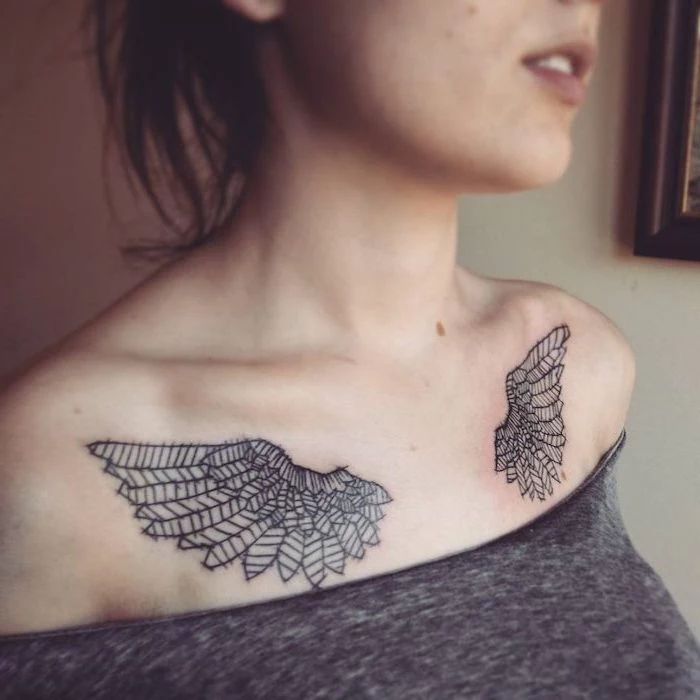
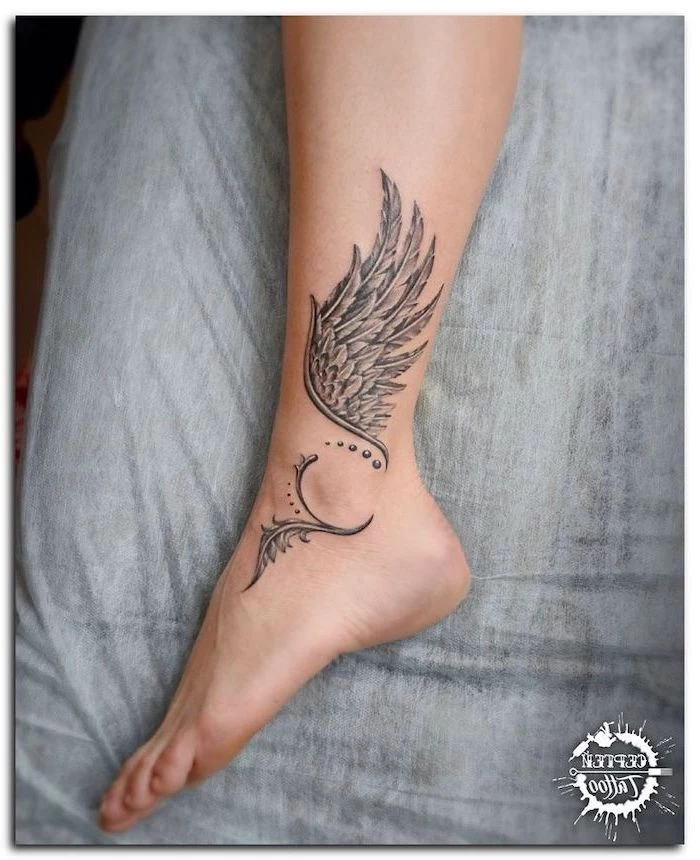
Black & Grey: The classic choice. It tends to age gracefully and offers incredible depth and realism. Ideal for creating dramatic, high-contrast pieces that focus on shadow and light. It’s often seen as more timeless.
Full Color: Offers emotional impact and vibrancy. Perfect for watercolor or neo-traditional styles where the wings tell a story through a specific palette. Be aware that colors, especially lighter ones, may require more diligent sun protection to stay bright.
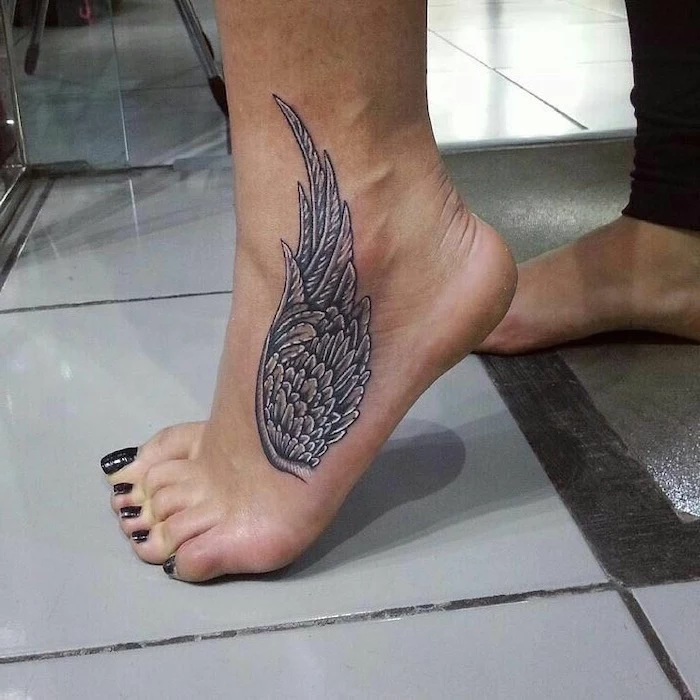
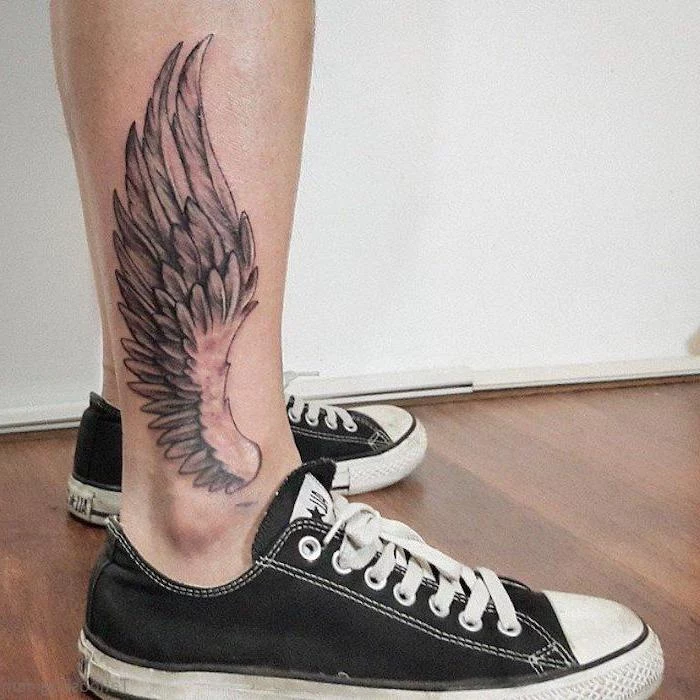
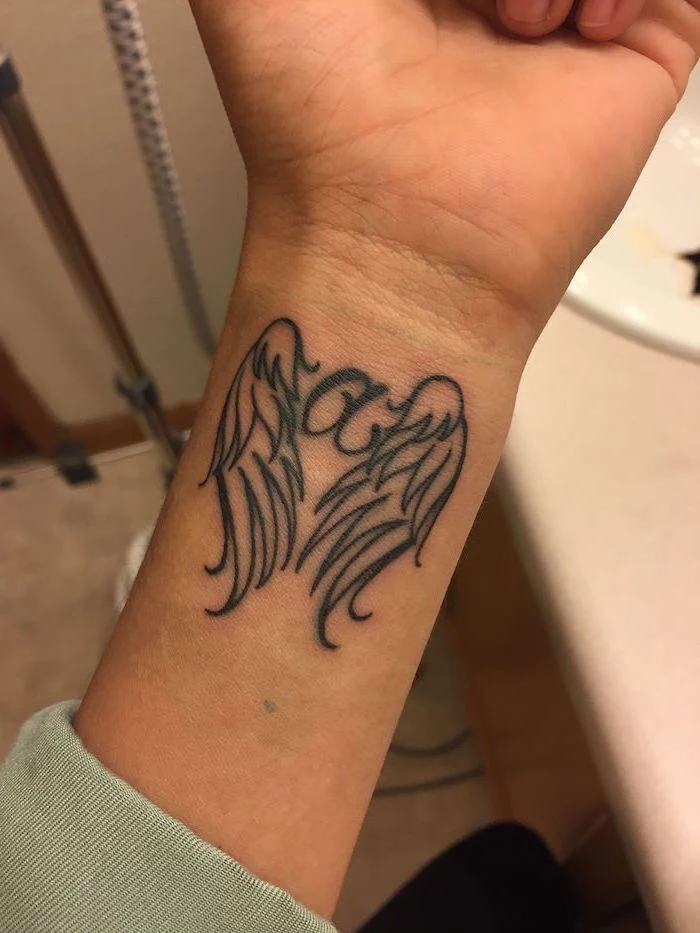
- They look beautifully delicate and detailed when fresh.
- They can capture the whisper-soft texture of a feather.
The secret? A single-needle technique. Using just one needle point allows for incredible precision, creating tattoos that look like fine pencil drawings. However, be aware that these ultra-fine lines can be more prone to fading or blurring over time and may require more frequent touch-ups than a design with bold outlines.
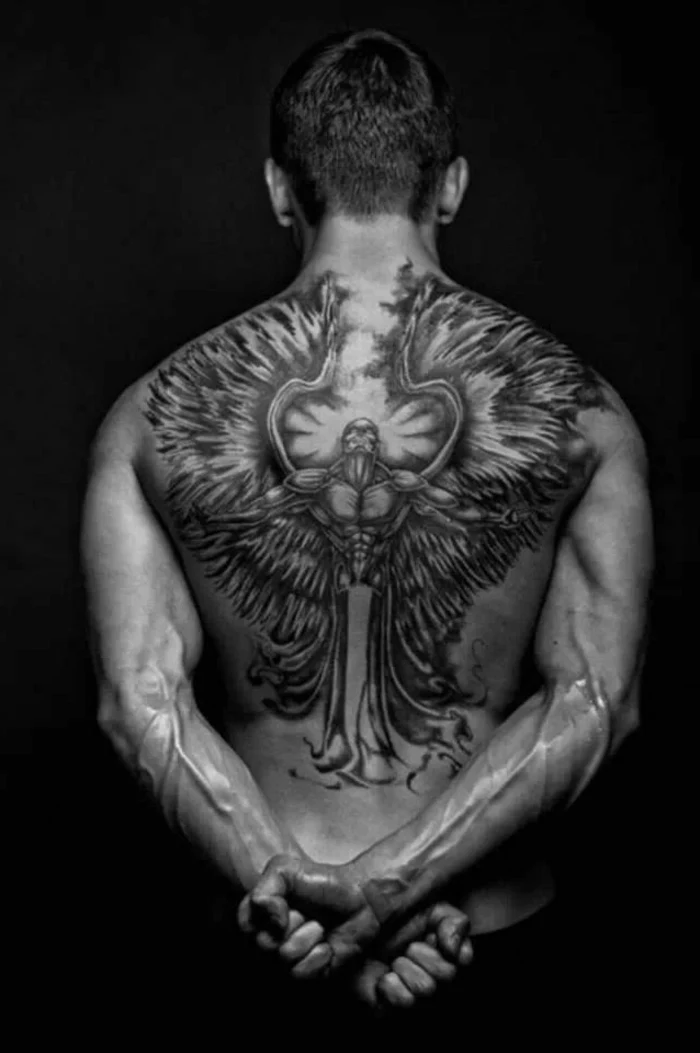
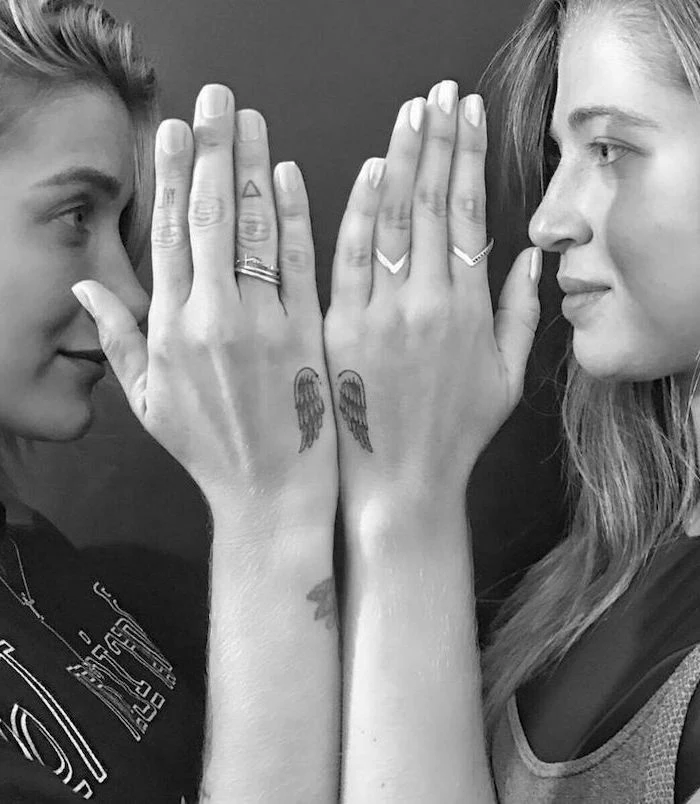
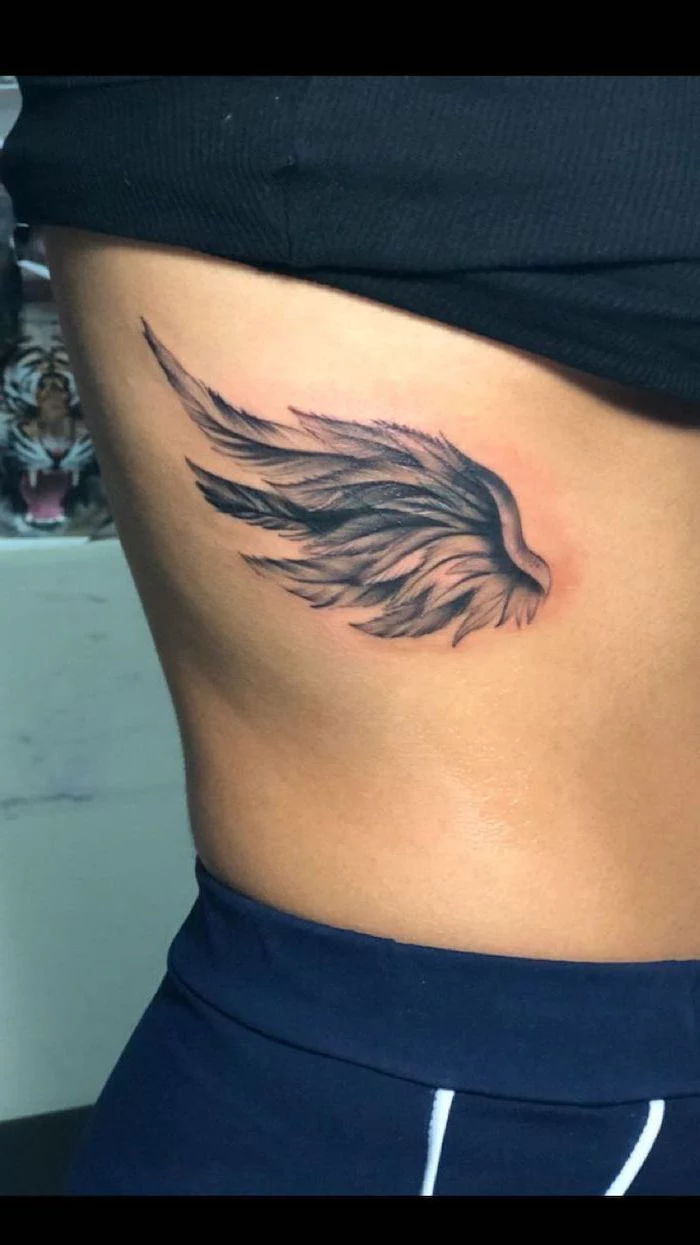
Instead of a massive back piece you can’t afford from a top-tier artist, consider a smaller, more detailed single wing on a shoulder blade or forearm. You’ll still get the high-quality line work and shading from a true professional, which will look better and last longer than a huge, poorly executed piece from a less experienced artist. Quality over quantity is key.
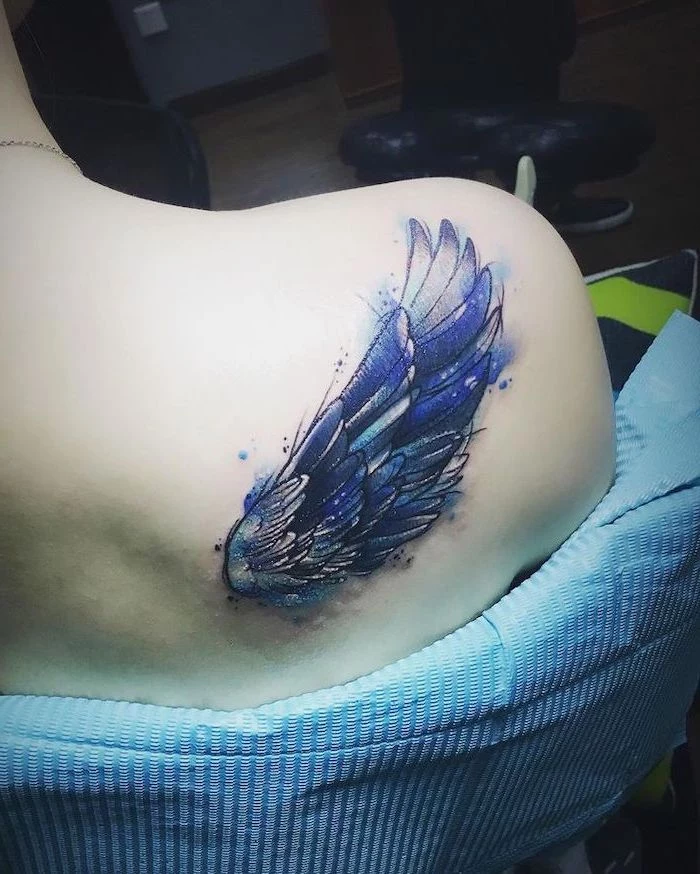
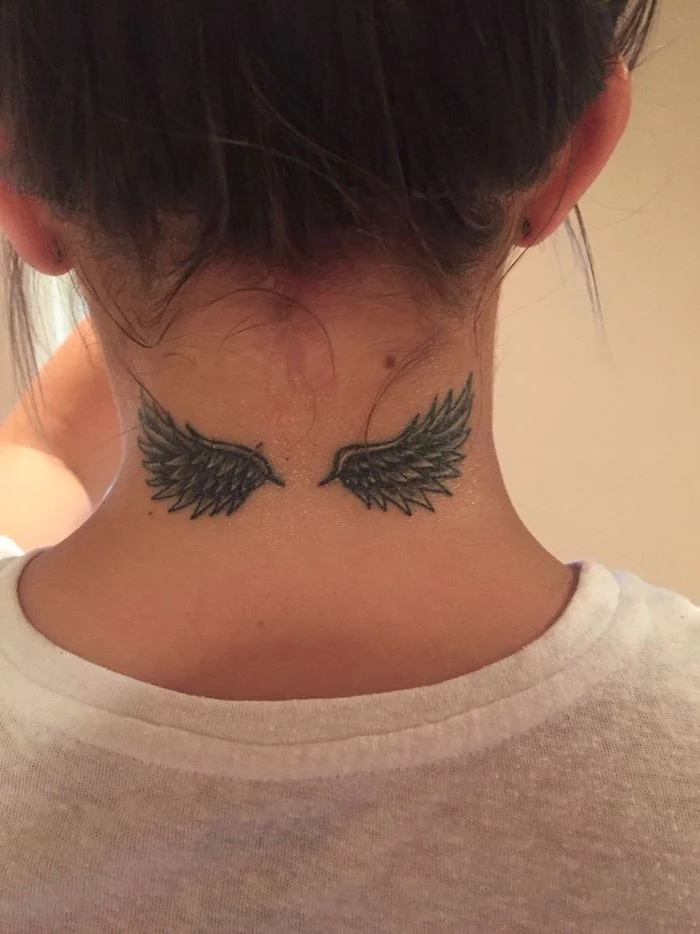
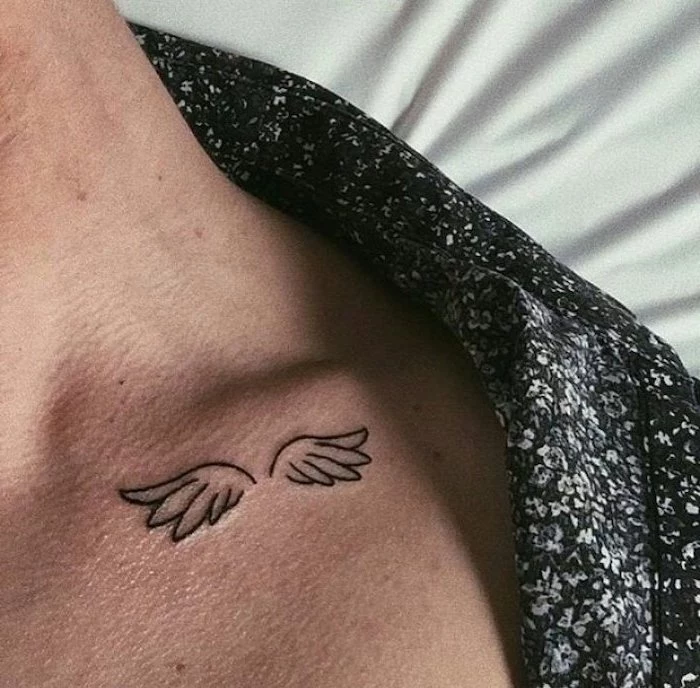
An important note on sun protection: Think of your tattoo as a long-term investment. The sun’s UV rays are the number one cause of fading and blurring. A high-SPF (50+) sunscreen is non-negotiable for the life of your tattoo, especially for color pieces. A vibrant tattoo can look dull and washed out after just a few summers of unprotected sun exposure.
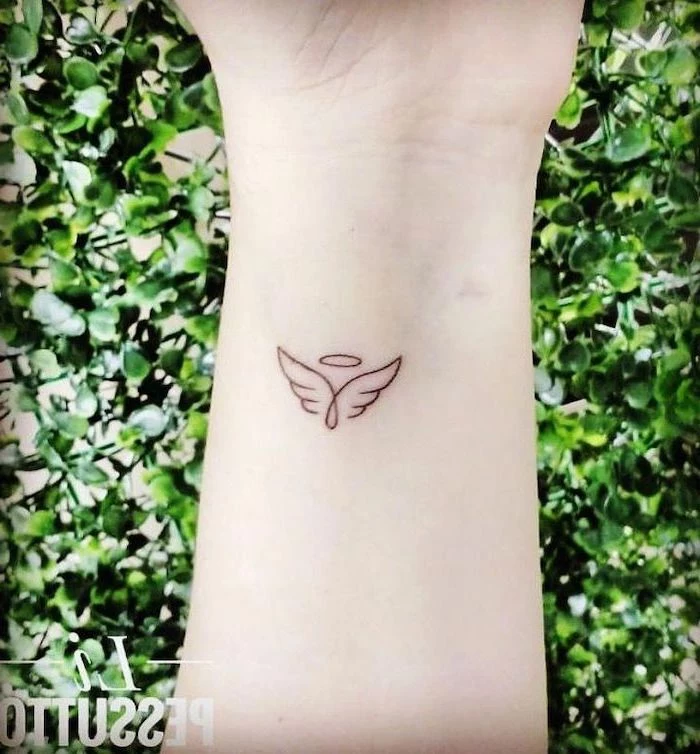
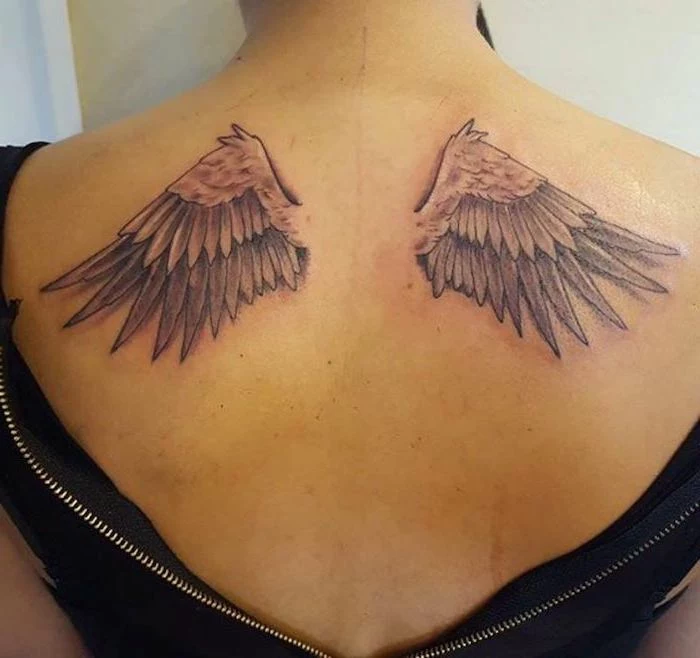
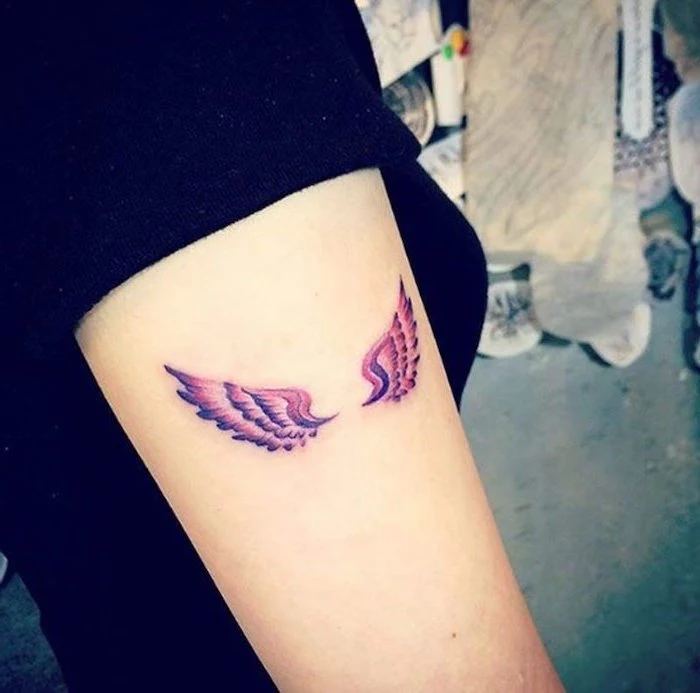
A 2021 study found that 1 in 5 people with tattoos experienced an adverse reaction, with red ink being the most common culprit for allergic responses, followed by black.
While serious reactions are rare, it’s a good reason to ask for a ‘spot test’ if you have sensitive skin or a history of allergies, where the artist tattoos a tiny, hidden dot of the chosen ink and waits a week or two to see how your skin handles it.

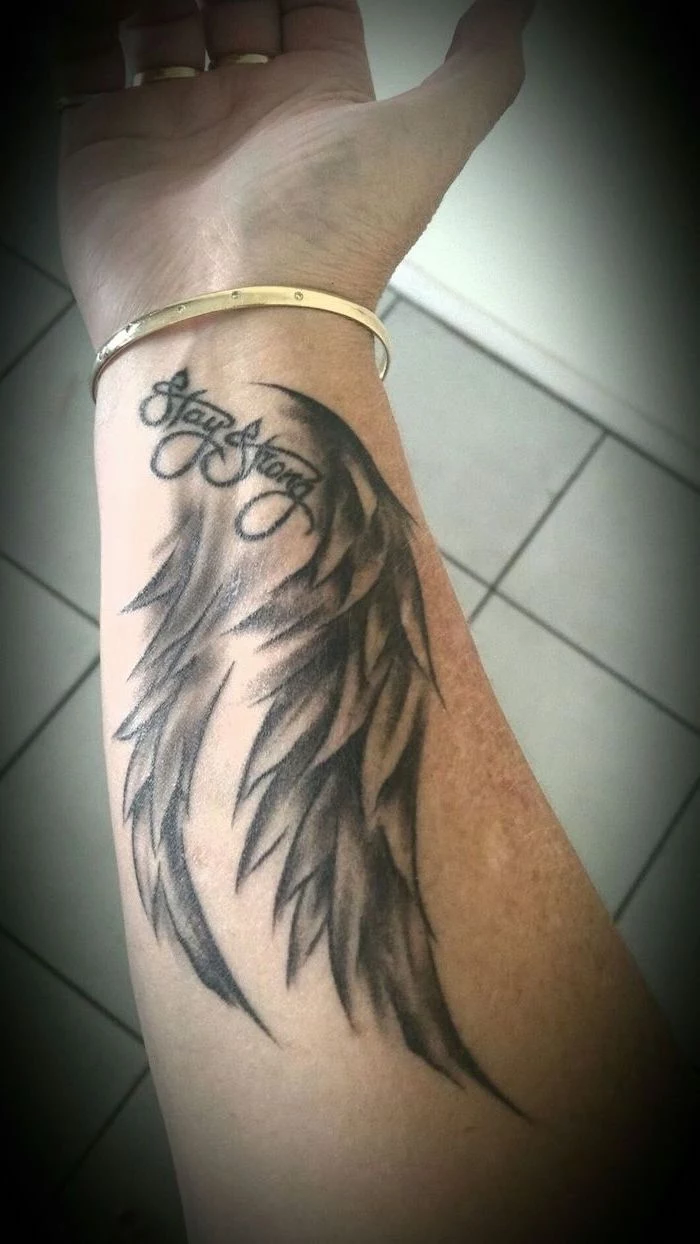

- Photos of actual bird wings (eagle for strength, dove for peace).
- Images of architectural details, like stone carvings on old churches.
- Textures you like, such as brushed metal or windswept grass.
- Artistic styles you admire, even if they aren’t tattoos.
Bringing a mood board of diverse inspirations gives your artist a much richer understanding of your desired aesthetic than just showing them other people’s tattoos.

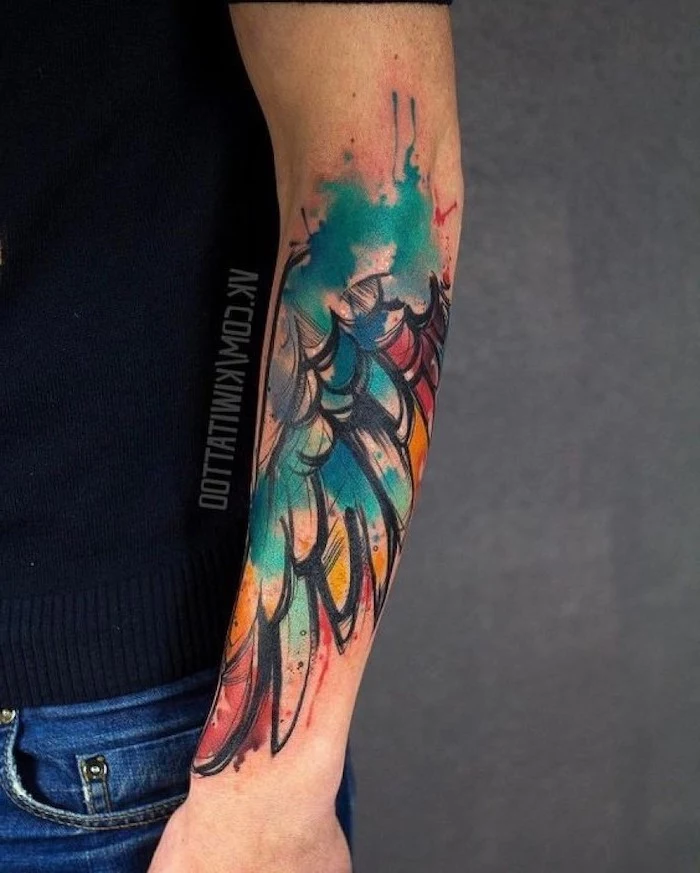
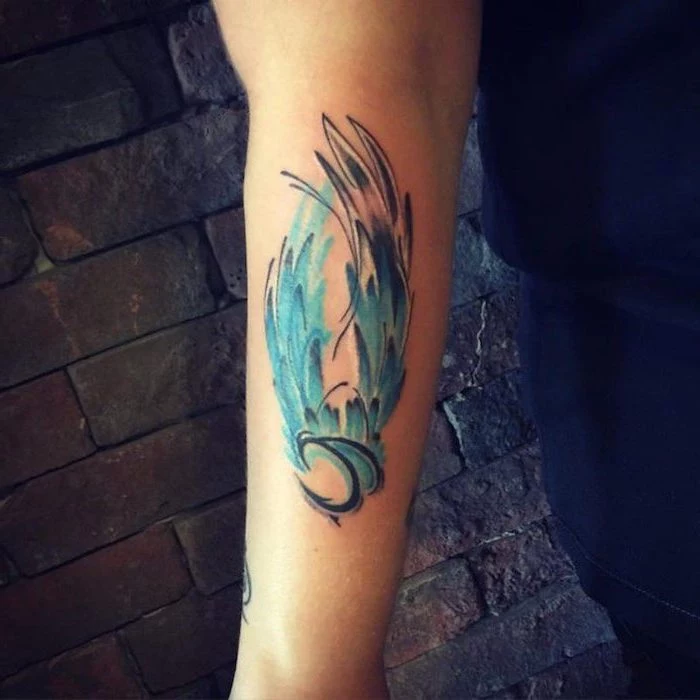
Move beyond photorealism and consider the latest trend: abstract wings. Think wings made of geometric patterns, flowing calligraphy strokes, or splattered brushwork in the ‘trash polka’ style. This approach focuses on the motion and feeling of wings rather than a literal depiction, resulting in a unique, modern, and highly personal piece of body art.
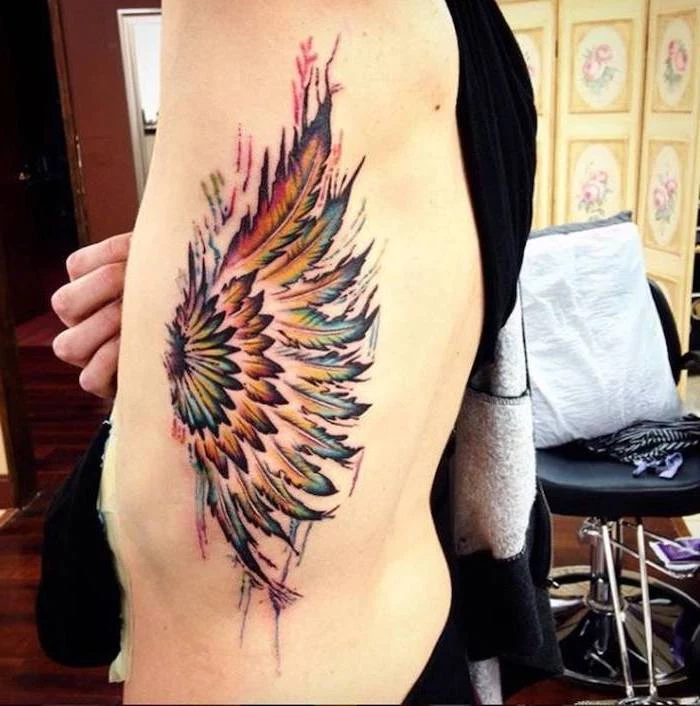
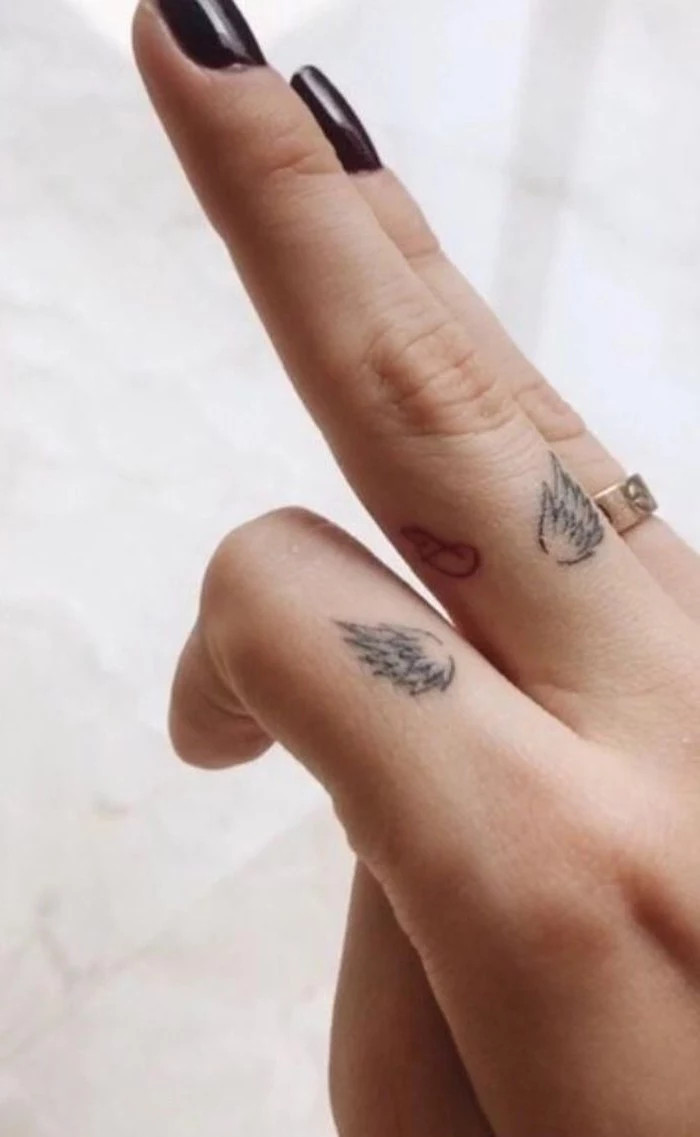
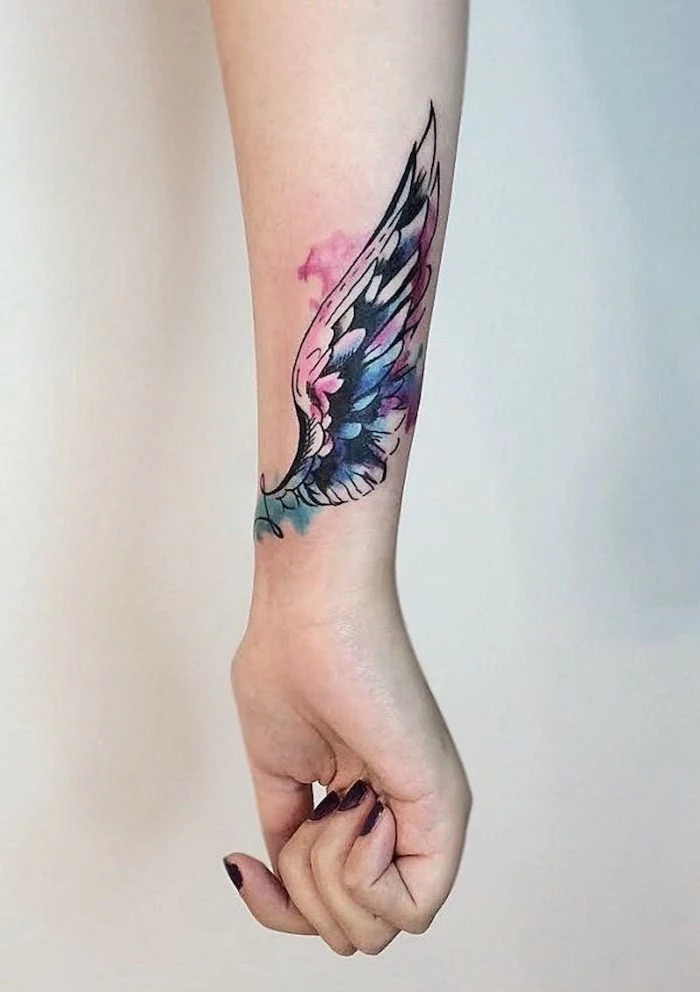
I’ve heard about vegan tattoo ink. Is it as good as the standard stuff?
Absolutely. Vegan ink is simply made without animal products. The black pigment in traditional ink, for example, is often bone char, while the glycerin used as a carrier can be animal-derived. Vegan-friendly brands like StarBrite, Eternal, and Fusion Ink use plant-based glycerin and alternative pigments. The quality, vibrancy, and longevity are identical, making it an easy ethical choice for many.
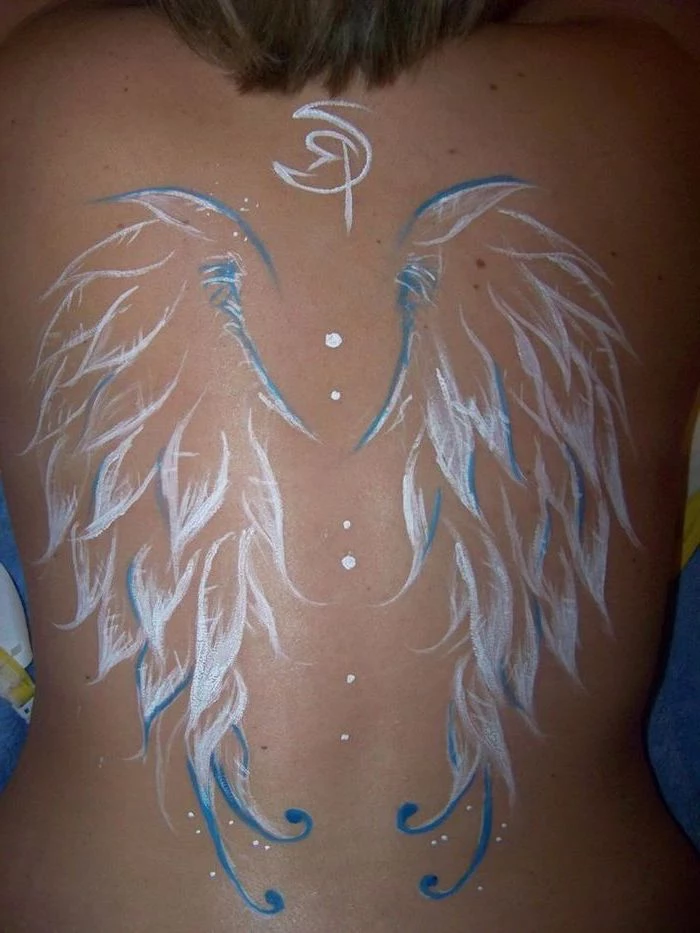
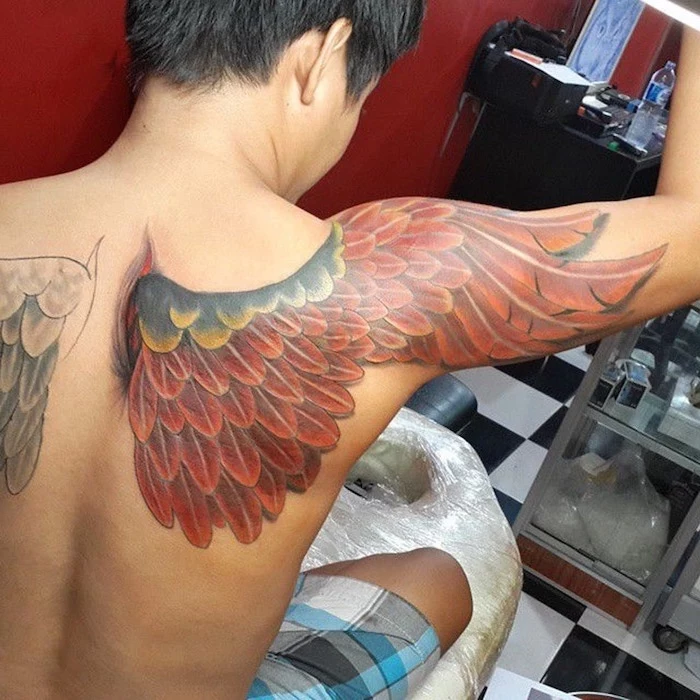
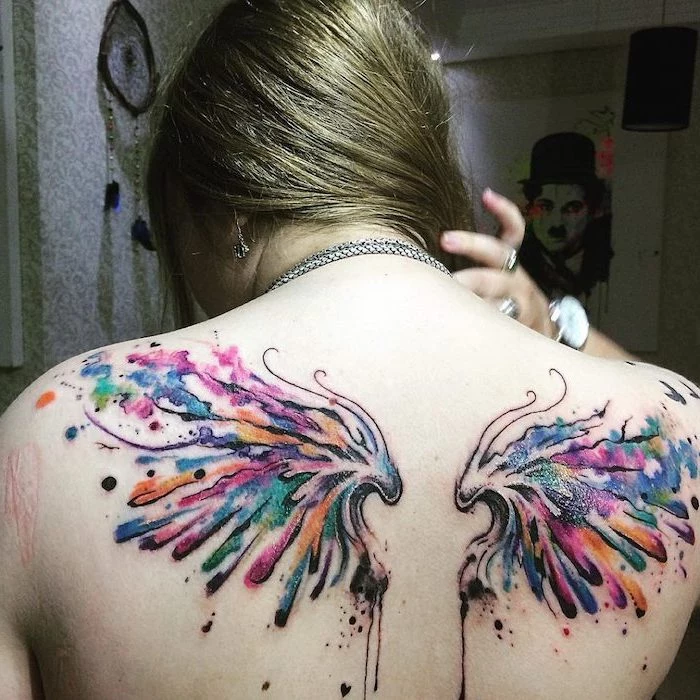
Single Needle: Creates exceptionally fine, delicate lines, perfect for small, intricate wings on an ankle or wrist. It mimics a pencil sketch, but its subtlety means it can be more susceptible to aging and sun damage.
Bold Linework: Uses thicker needles to create strong, defined outlines. This style is incredibly durable and ensures the tattoo remains clear and legible for decades. It’s ideal for large back pieces that need to make a powerful statement.
Your choice depends on whether you prioritize delicate detail or long-term legibility.
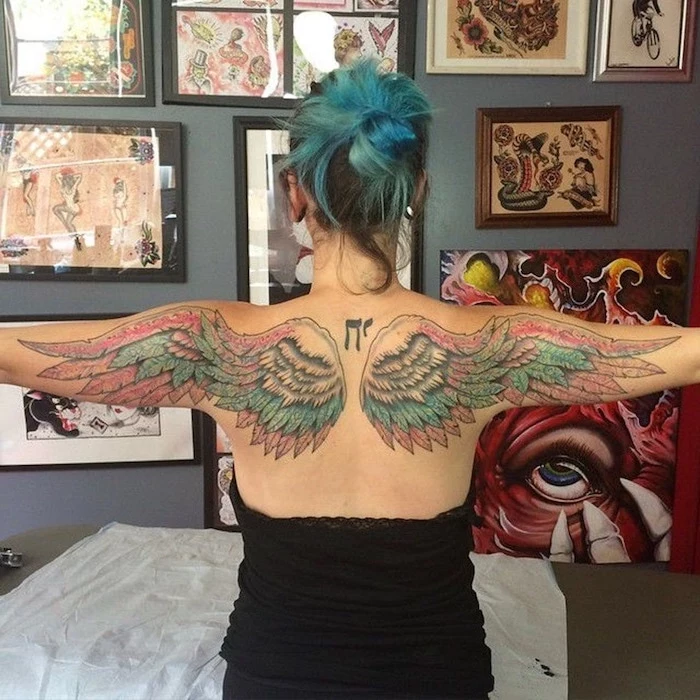
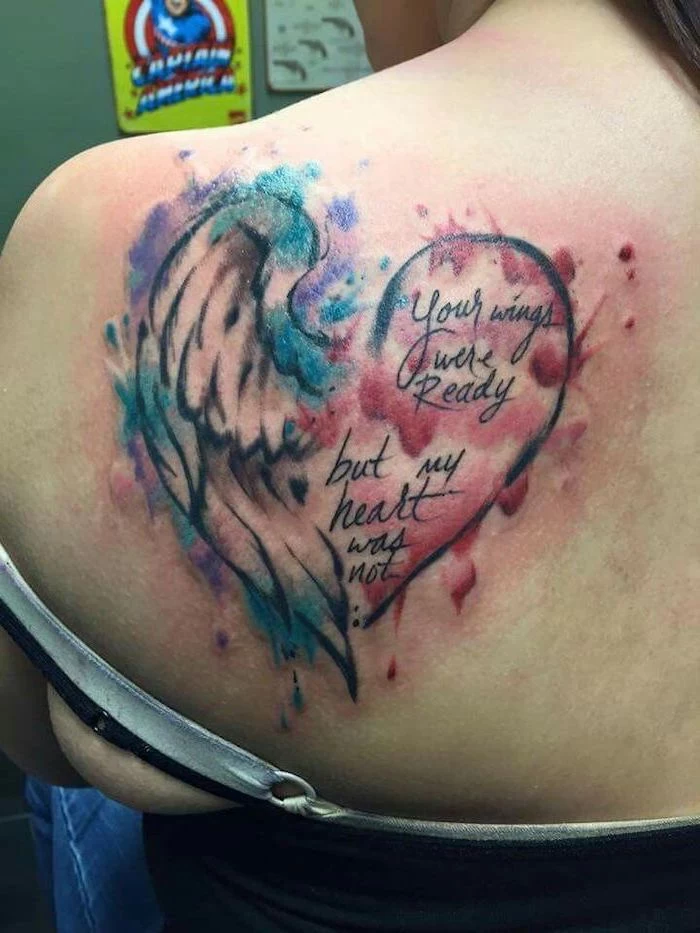
Pain is relative, but the anatomy doesn’t lie: areas with thin skin directly over bone are the most sensitive.
This means that for a wing tattoo, the shoulder blade and spine are typically the most intense spots on the back, while the fleshy outer part of the back is more manageable. Similarly, a wing on the outer forearm will be far less painful than one wrapping over the wrist bone or into the elbow ditch.

